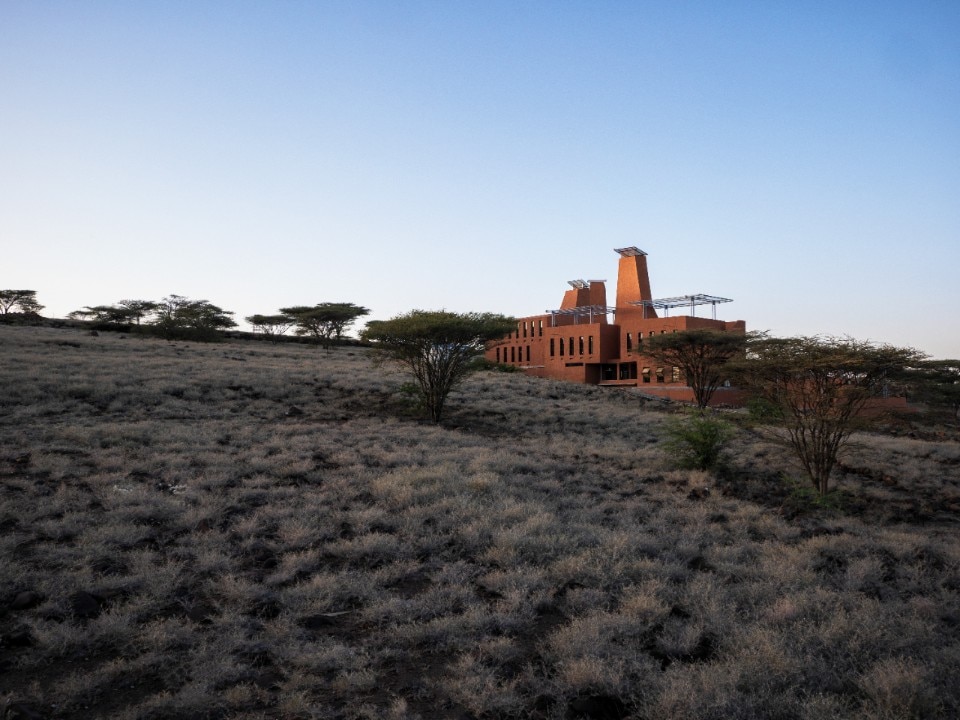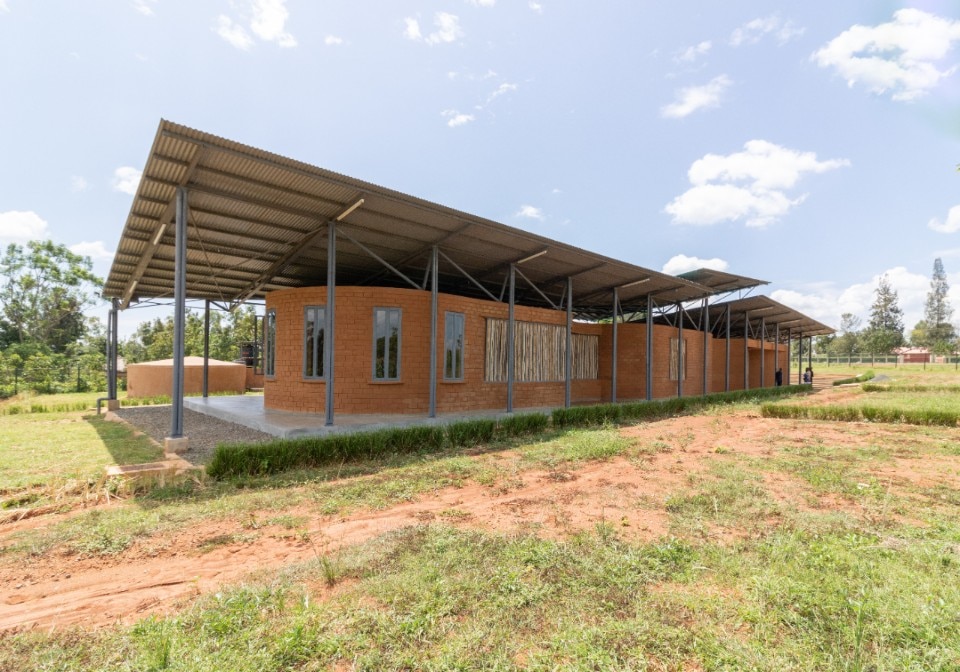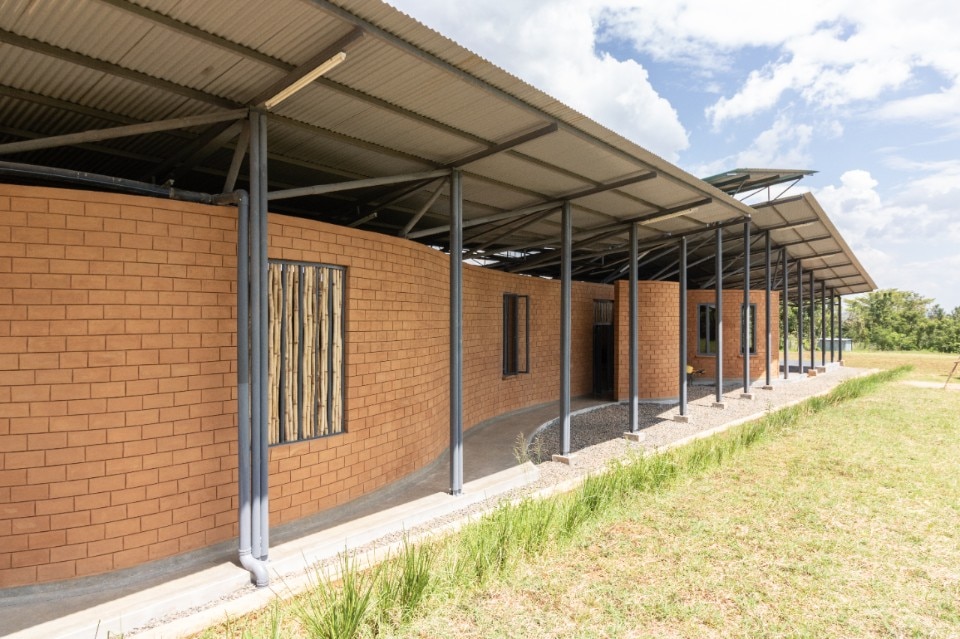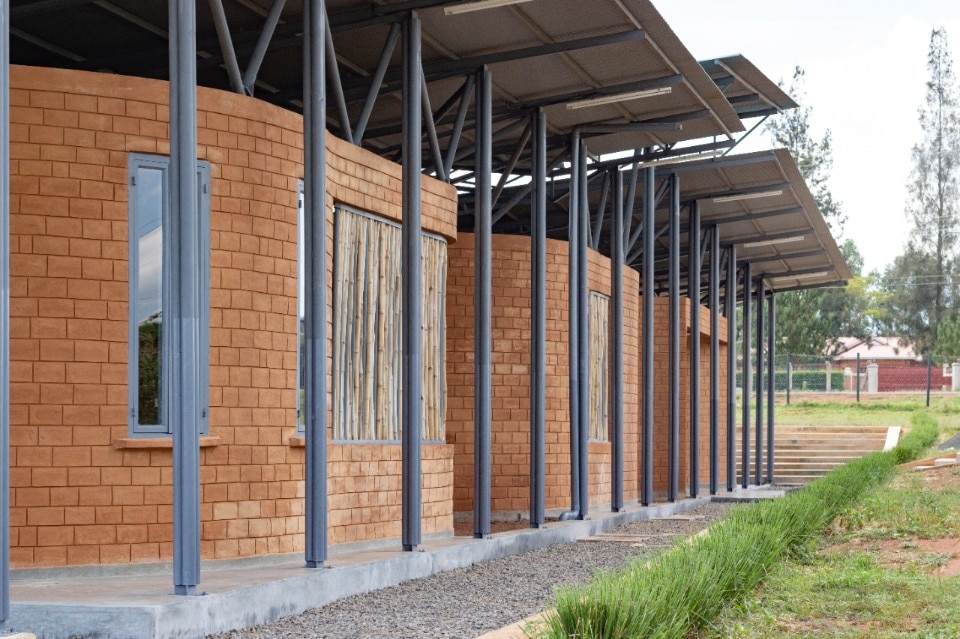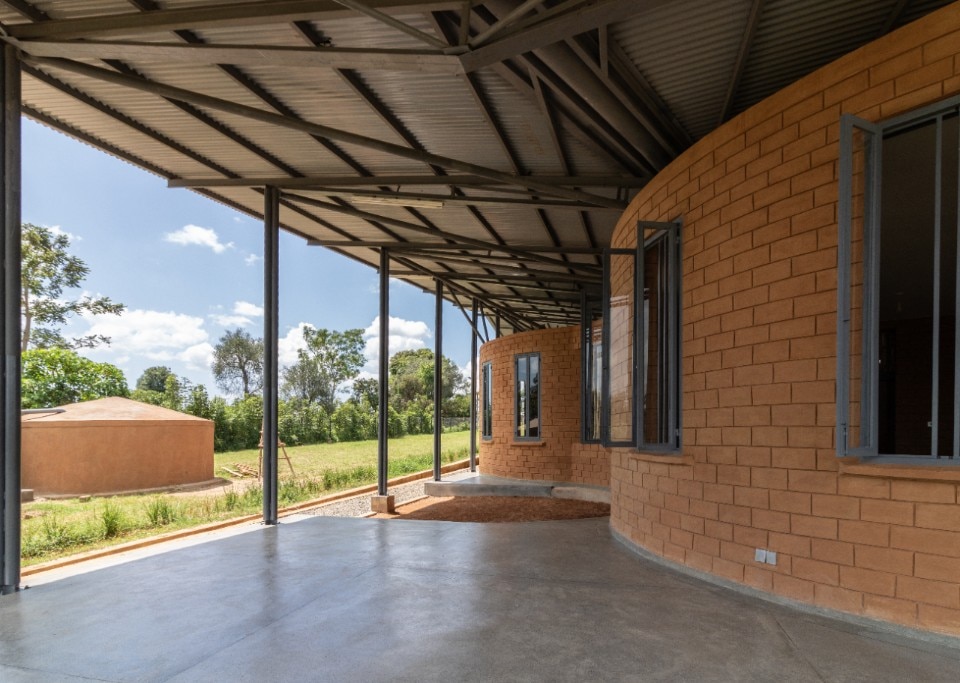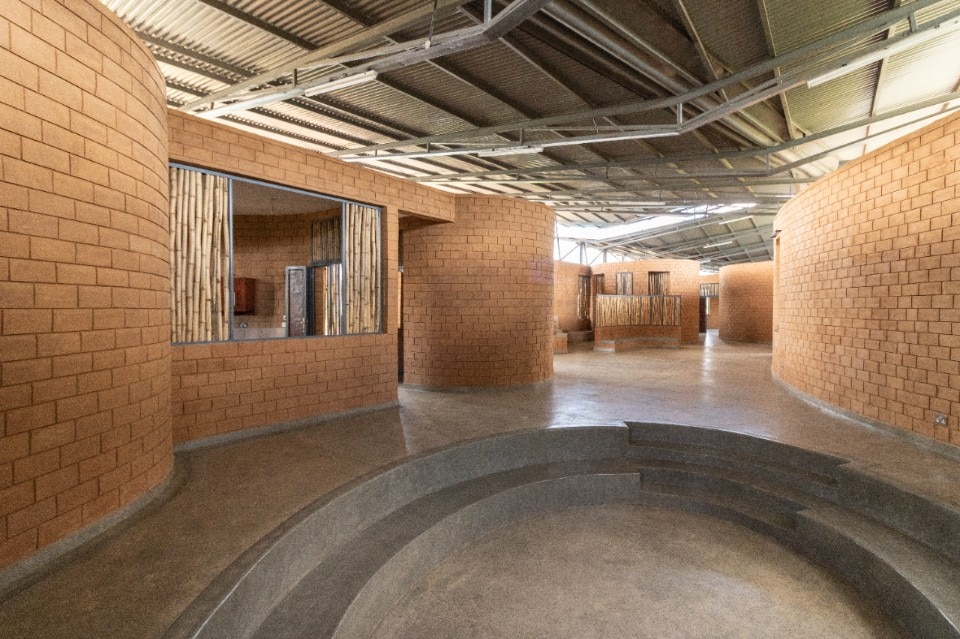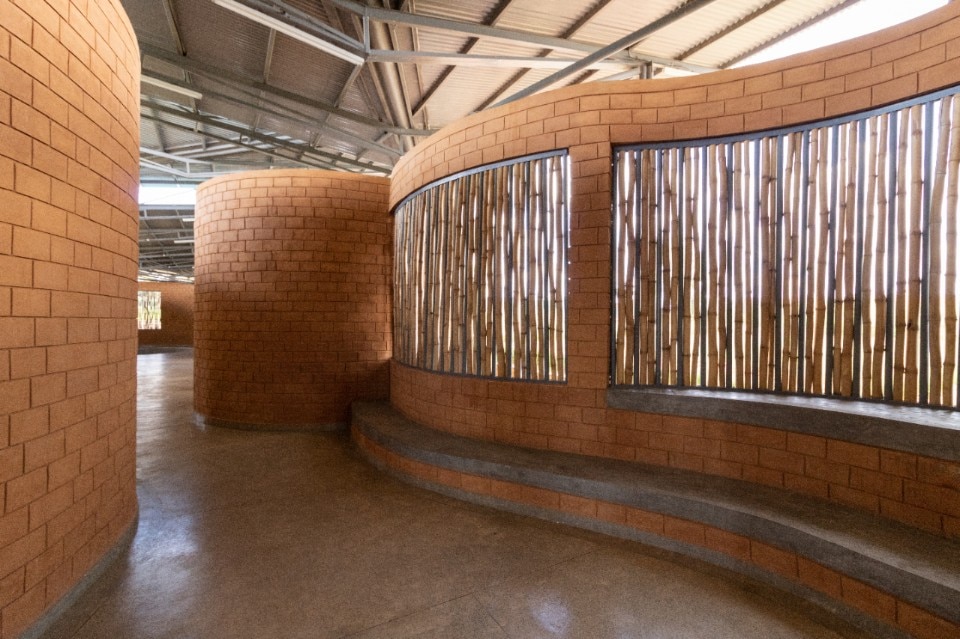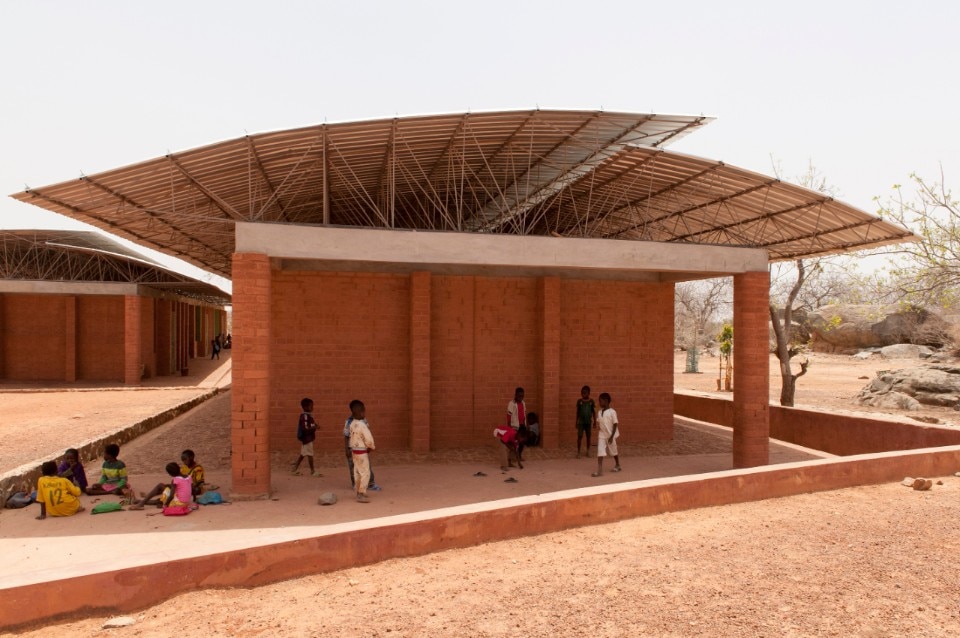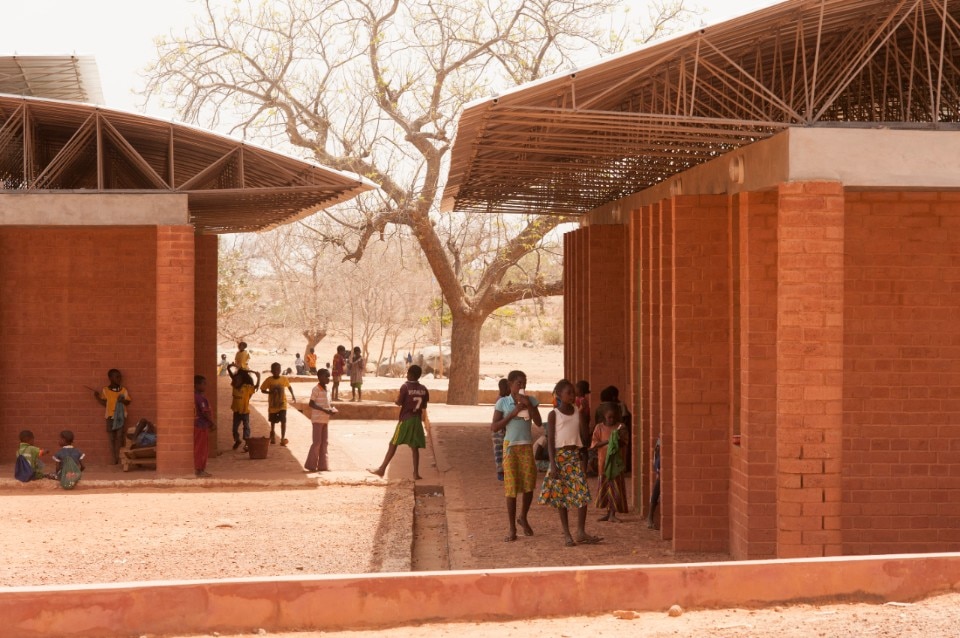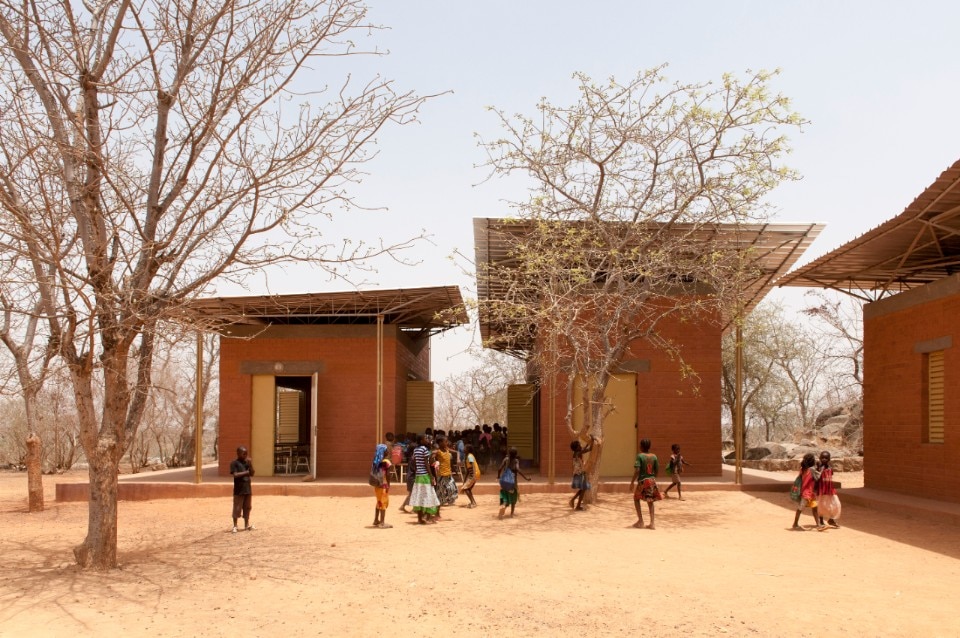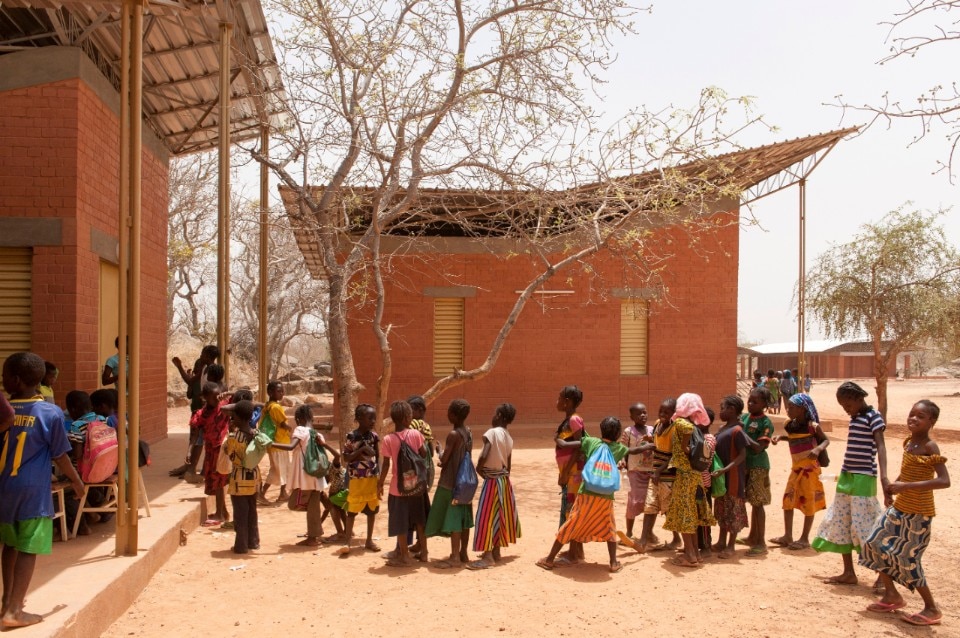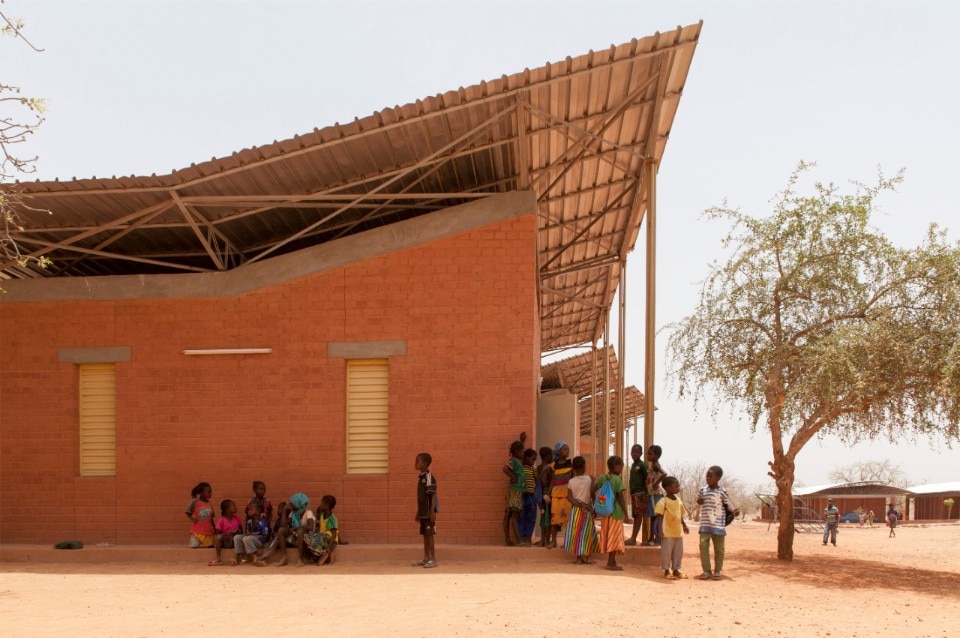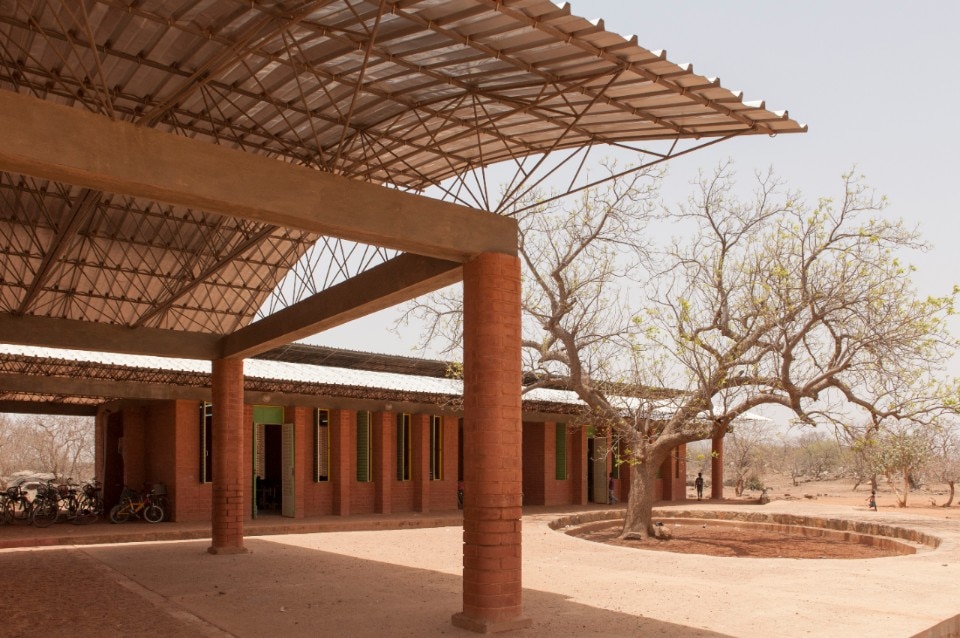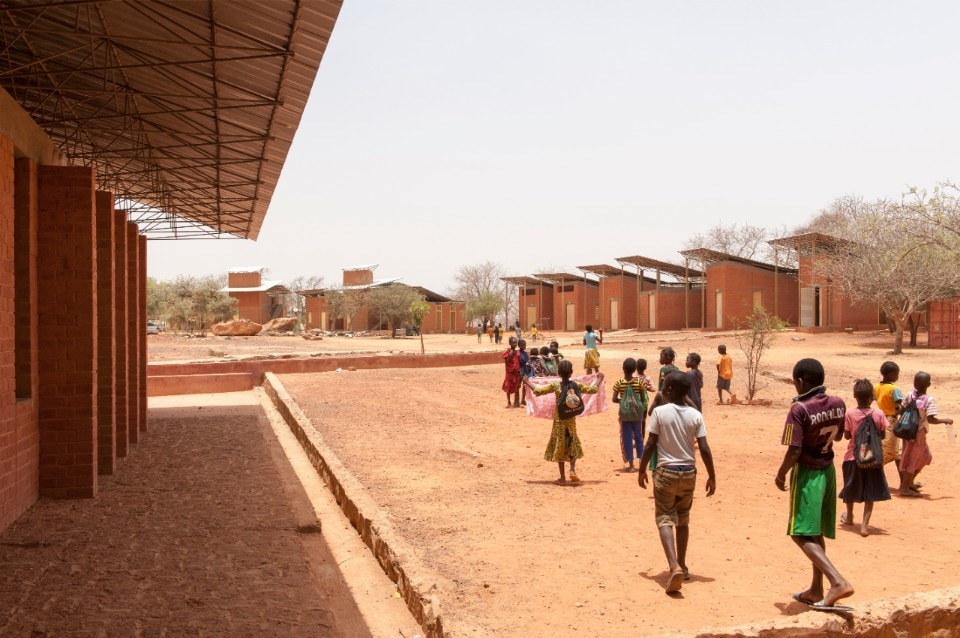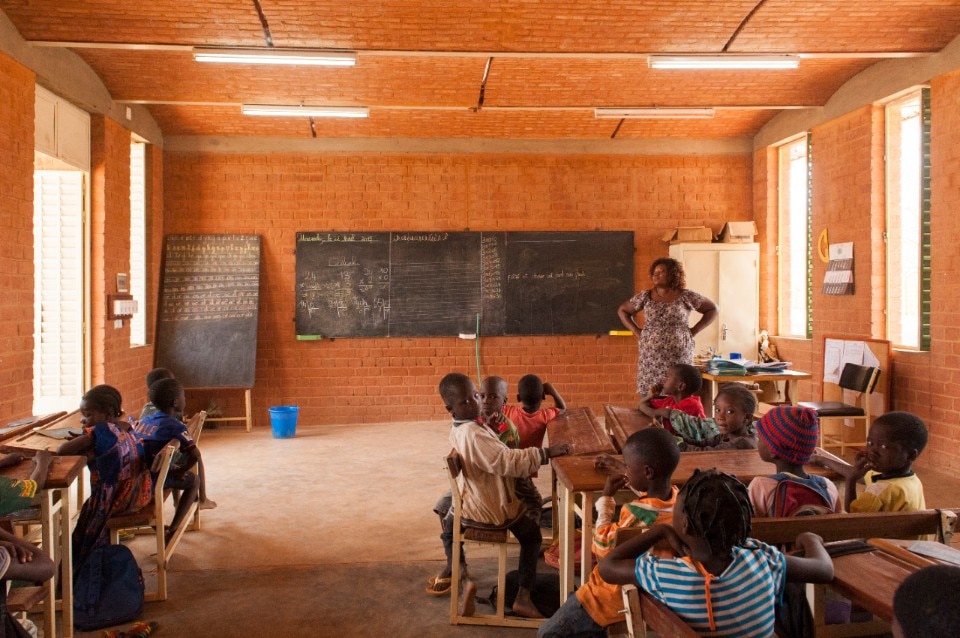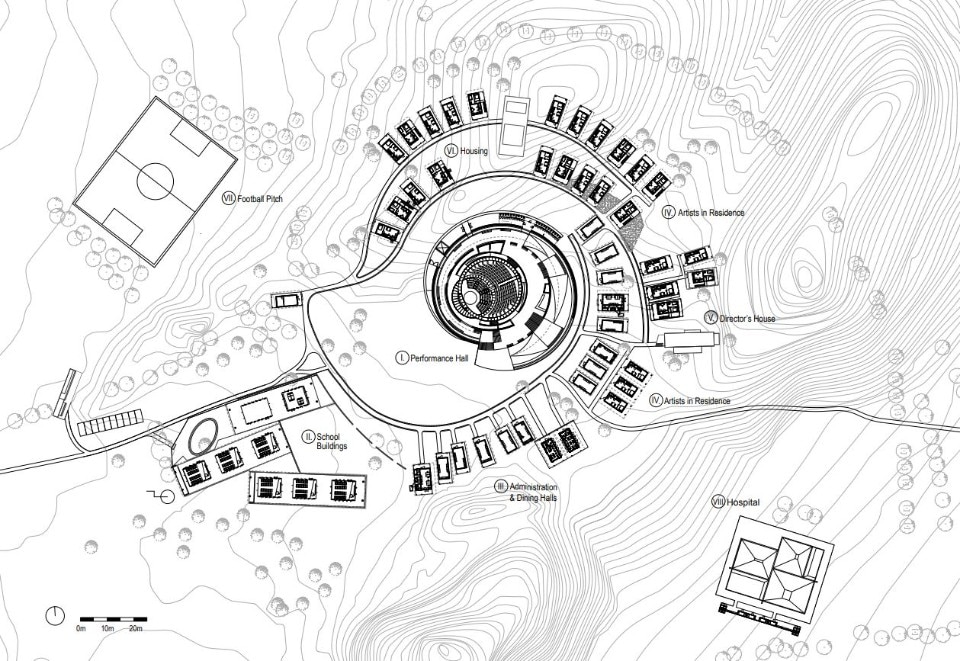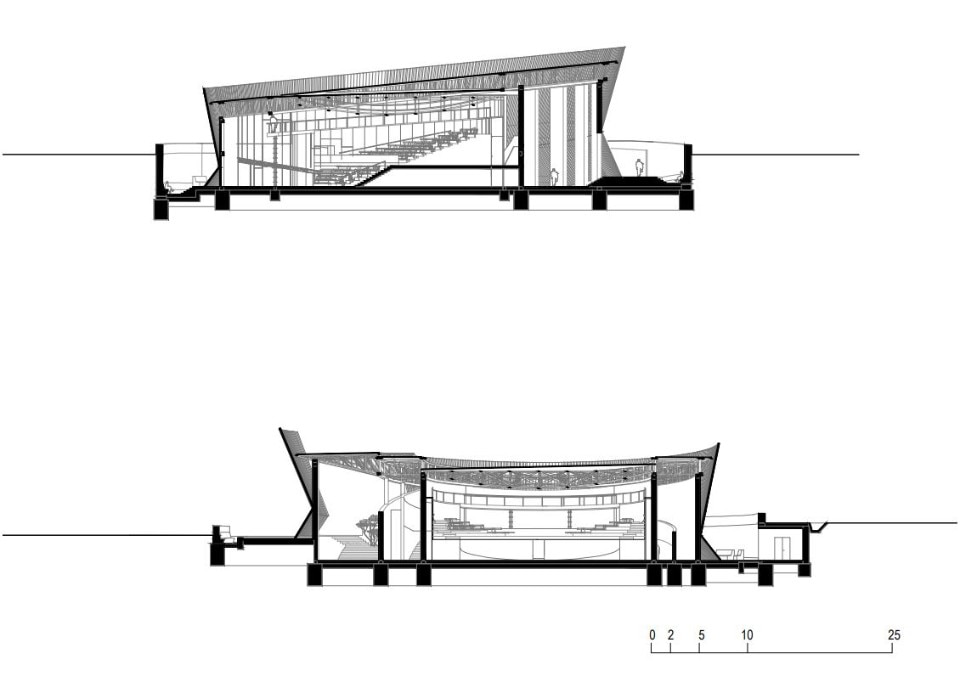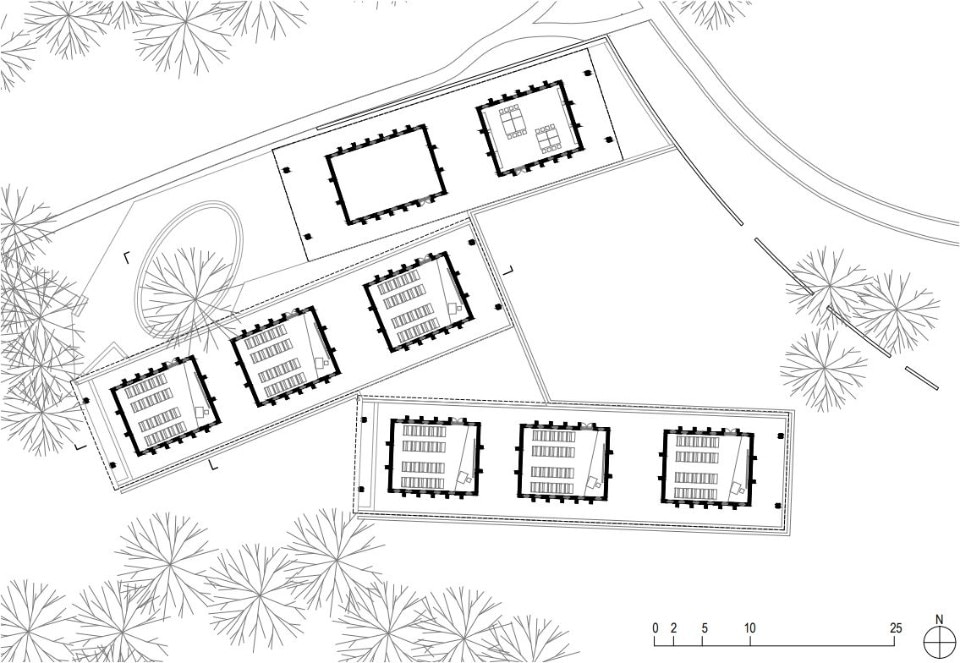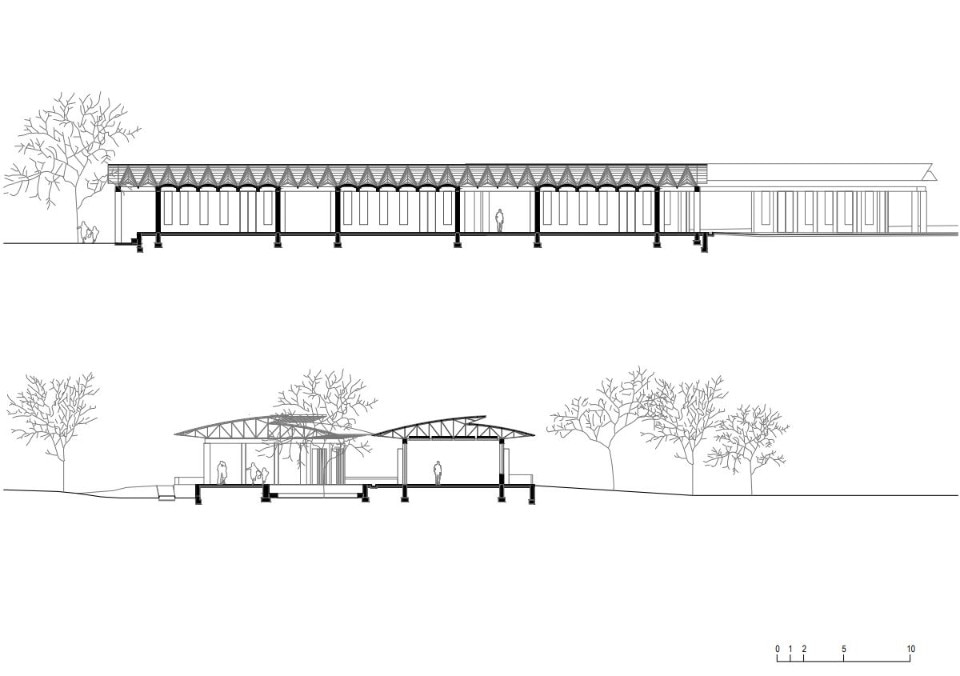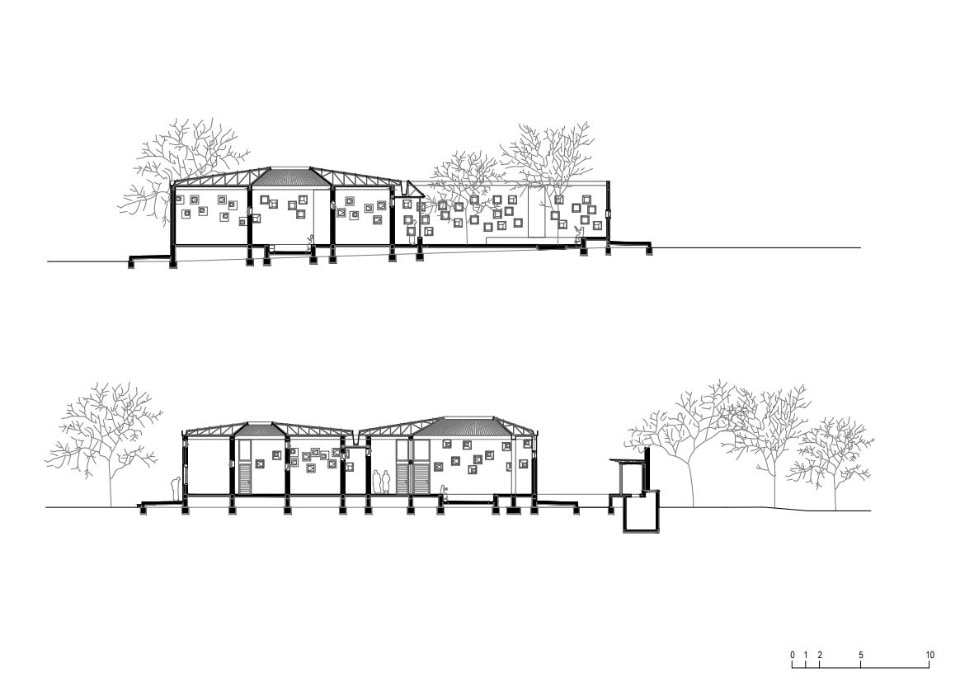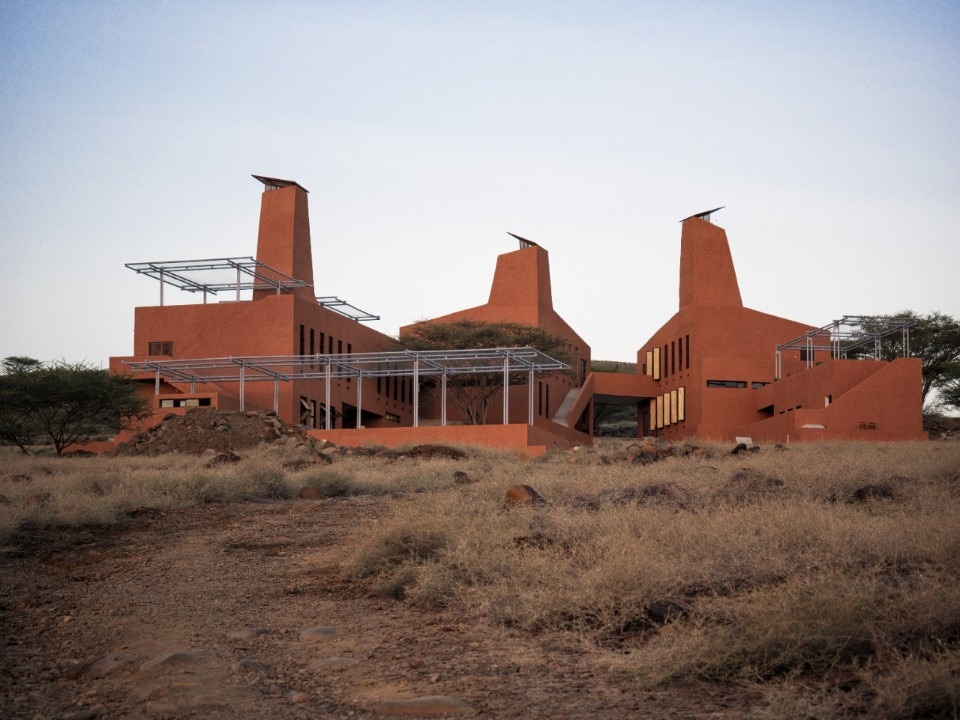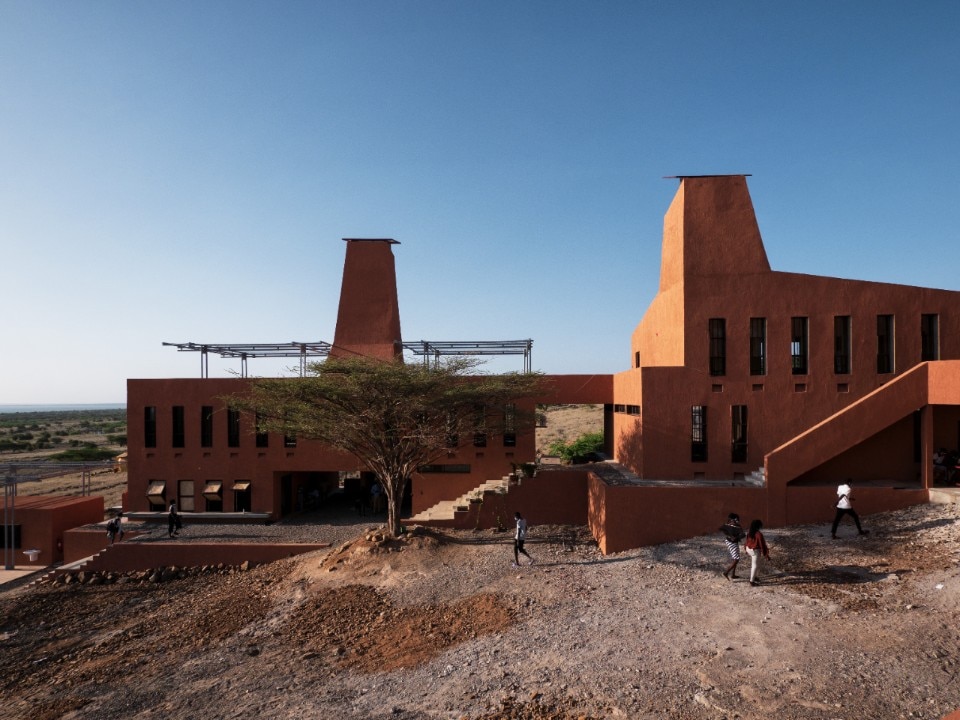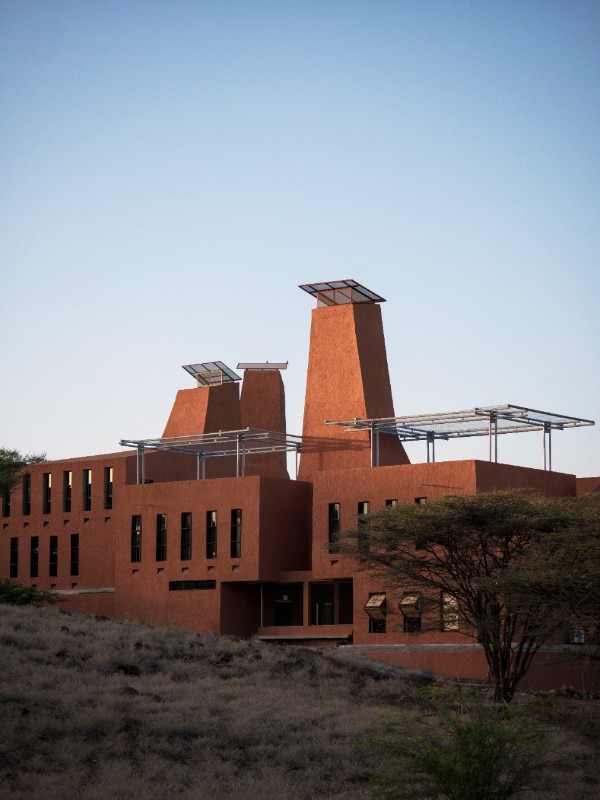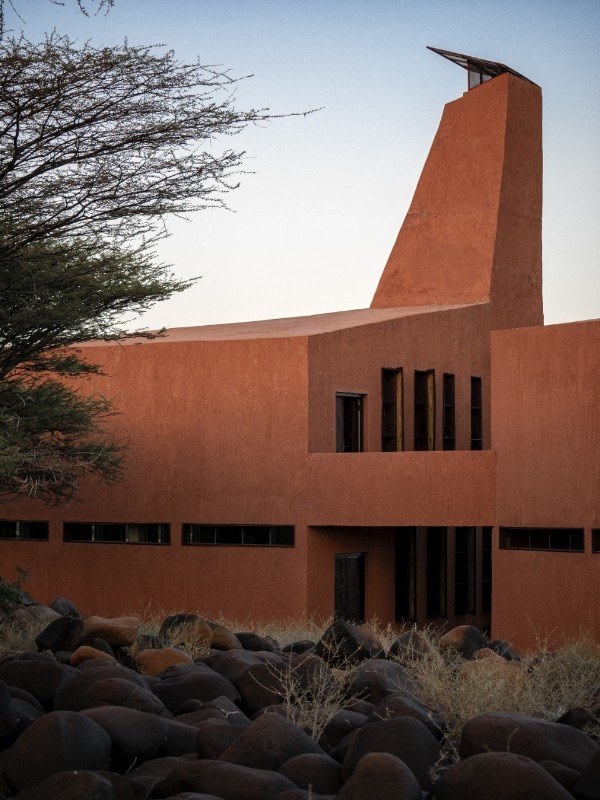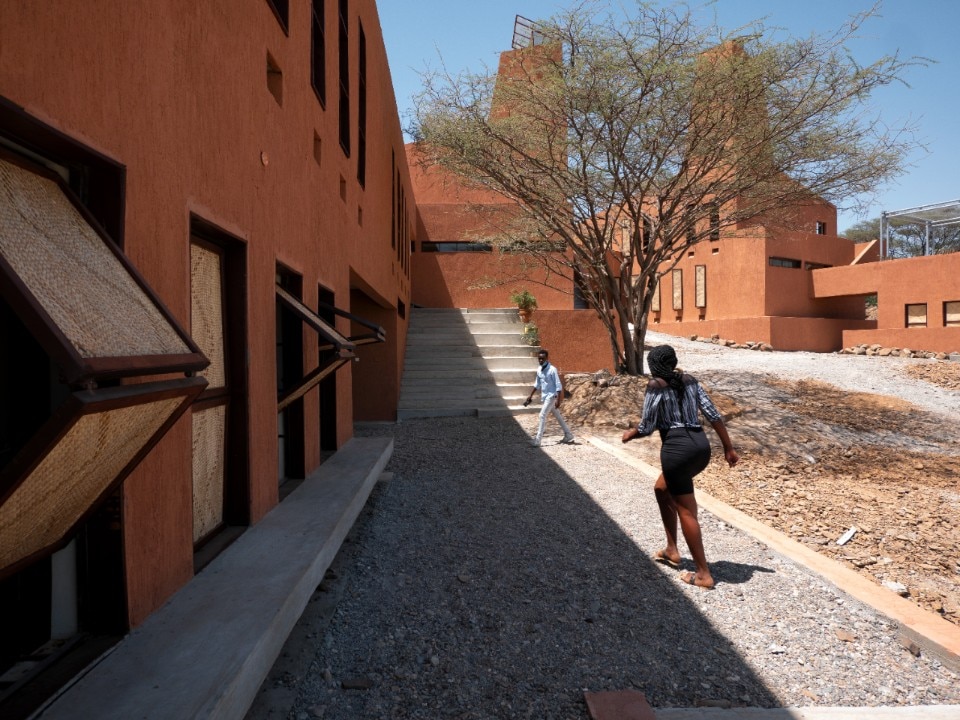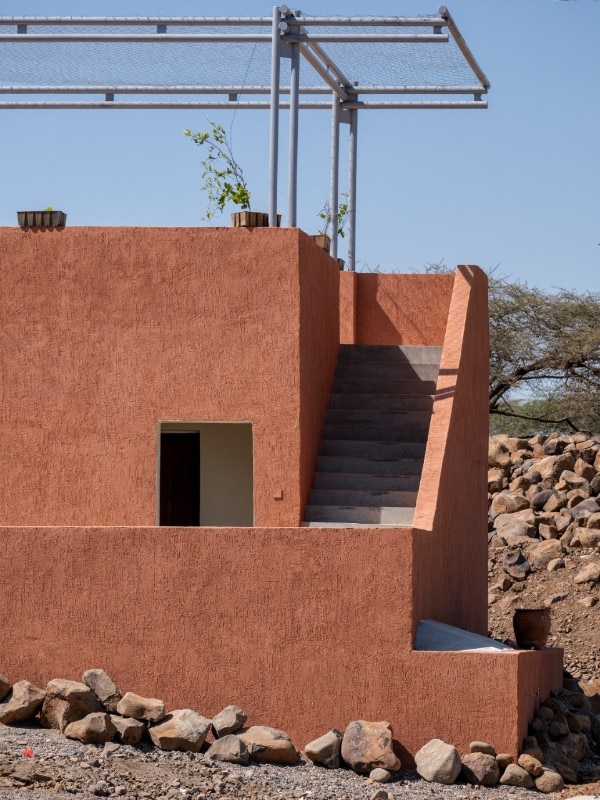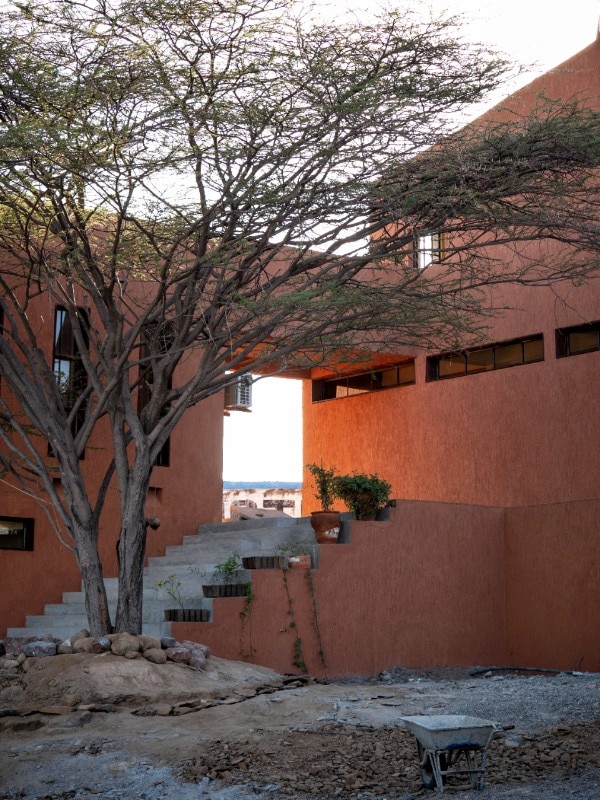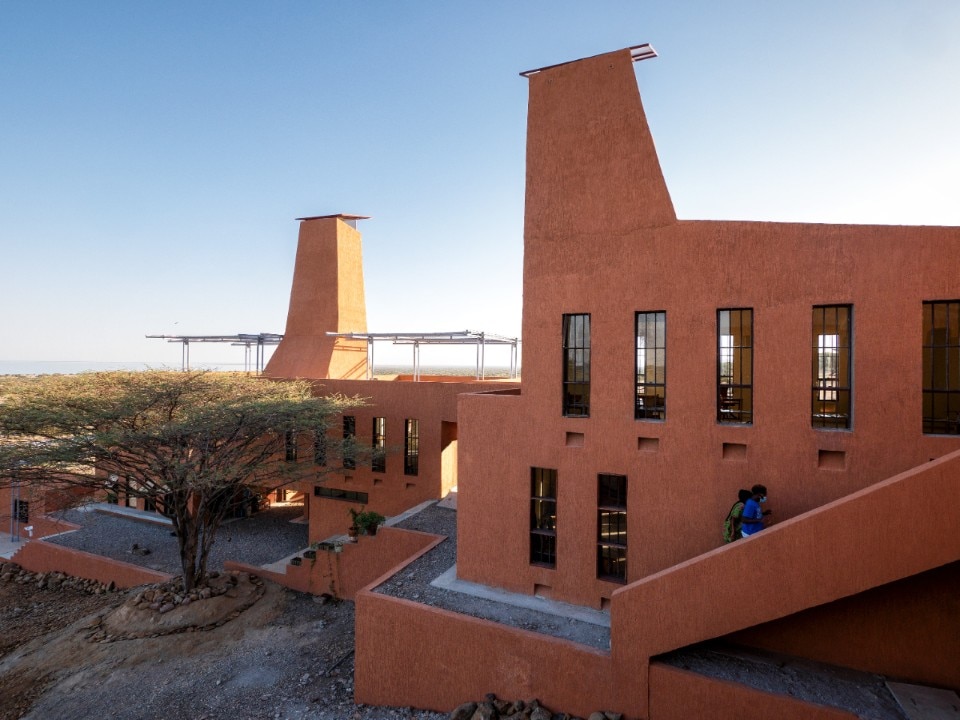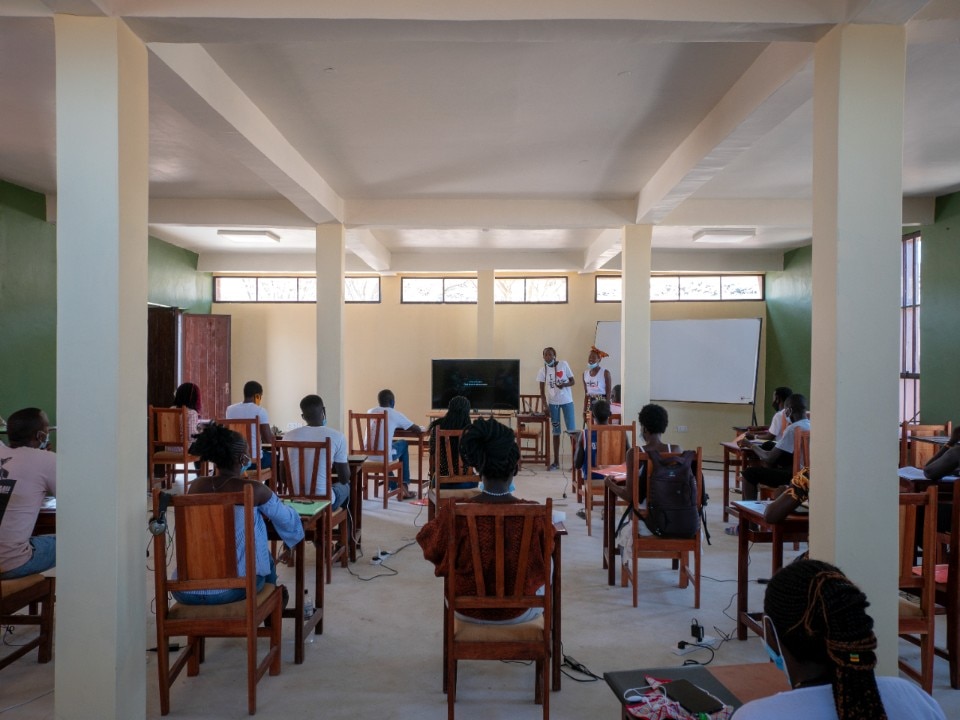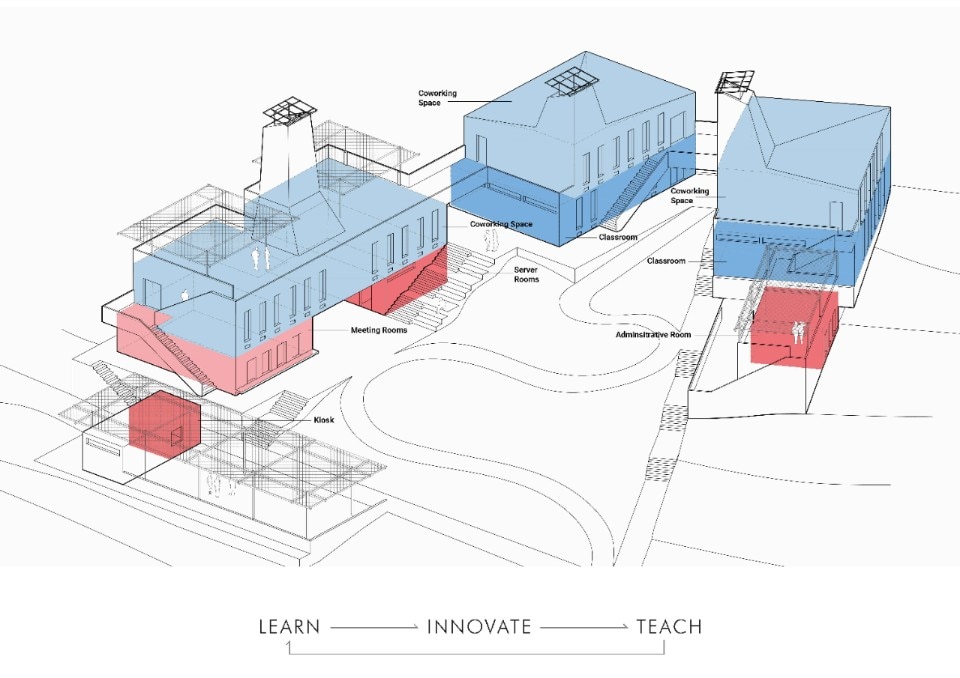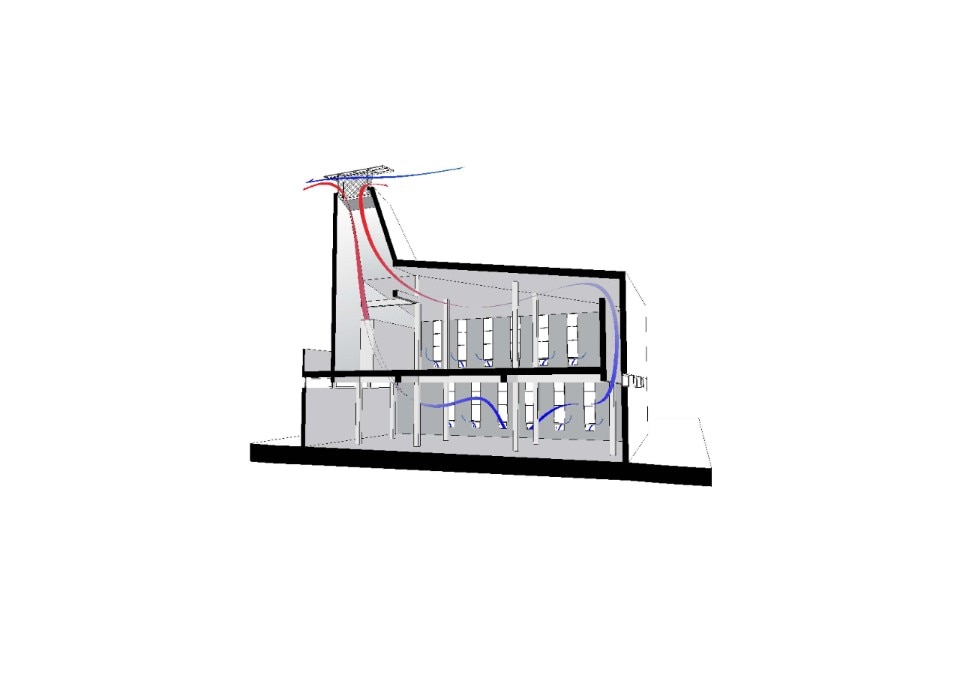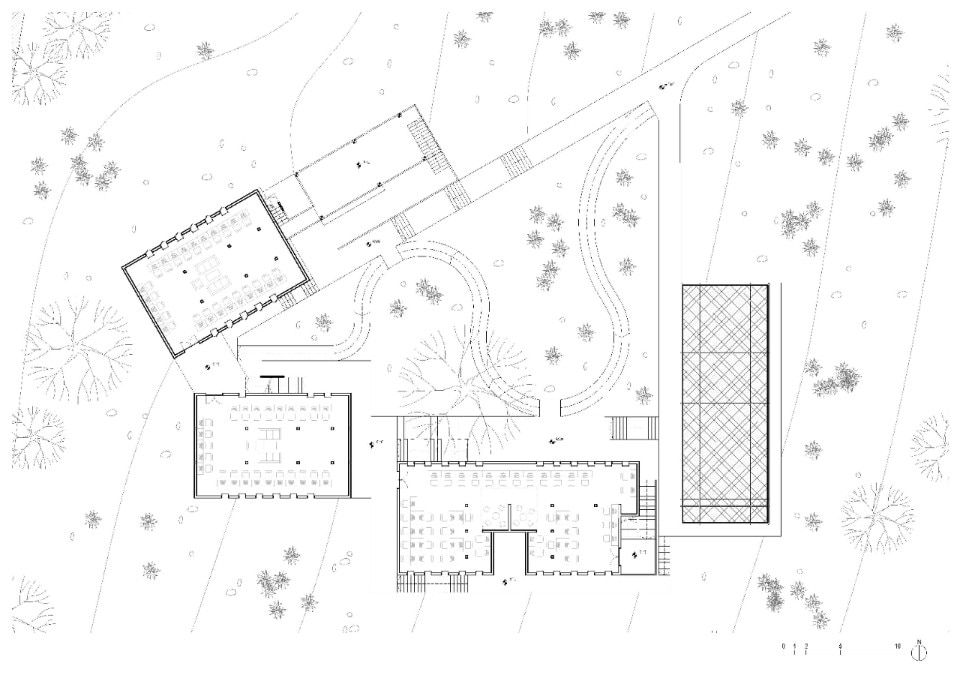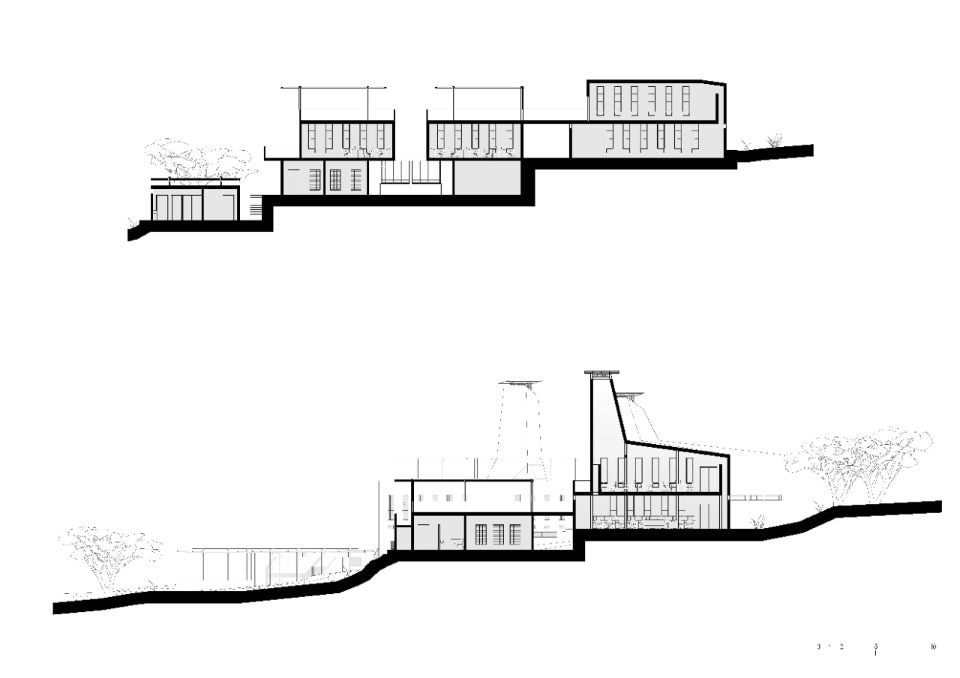This article was originally published on Domus 1069, June 2022.
Francis Kéré laid the foundations for his exceptional career in 2001 with the primary school building in Gando, the village where he was born in Burkina Faso. The project, which he developed during his studies at the Technische Universität in Berlin, garnered international attention as soon as it was completed, being immediately published and then winning the Aga Khan Award for Architecture in 2004. In line with this first pioneering work, Kéré continued to focus on the design of numerous other buildings dedicated to education, health and culture, mainly in sub-Saharan Africa.
The scale of his projects grew gradually, but in recent years they have managed to attain new dimensions with increasing momentum, not only in the size of the buildings themselves, but above all the significance they have acquired beyond their regional confines. At the 2016 Architecture Biennale in Venice, Kéré presented a project for a new National Assembly building in Ouagadougou: a pyramidal structure rising in the middle of a large public space and overlooking the capital of Burkina Faso. The aim of the proposal was to enable citizens to gather in front of the parliament and gain access to it via a large complex of open steps and terraced gardens. It is no coincidence that the design evokes the publicly accessible dome designed by Norman Foster surmounting the Reichstag in Berlin. In Ouagadougou, too, the purpose was to convey a strong signal of democracy
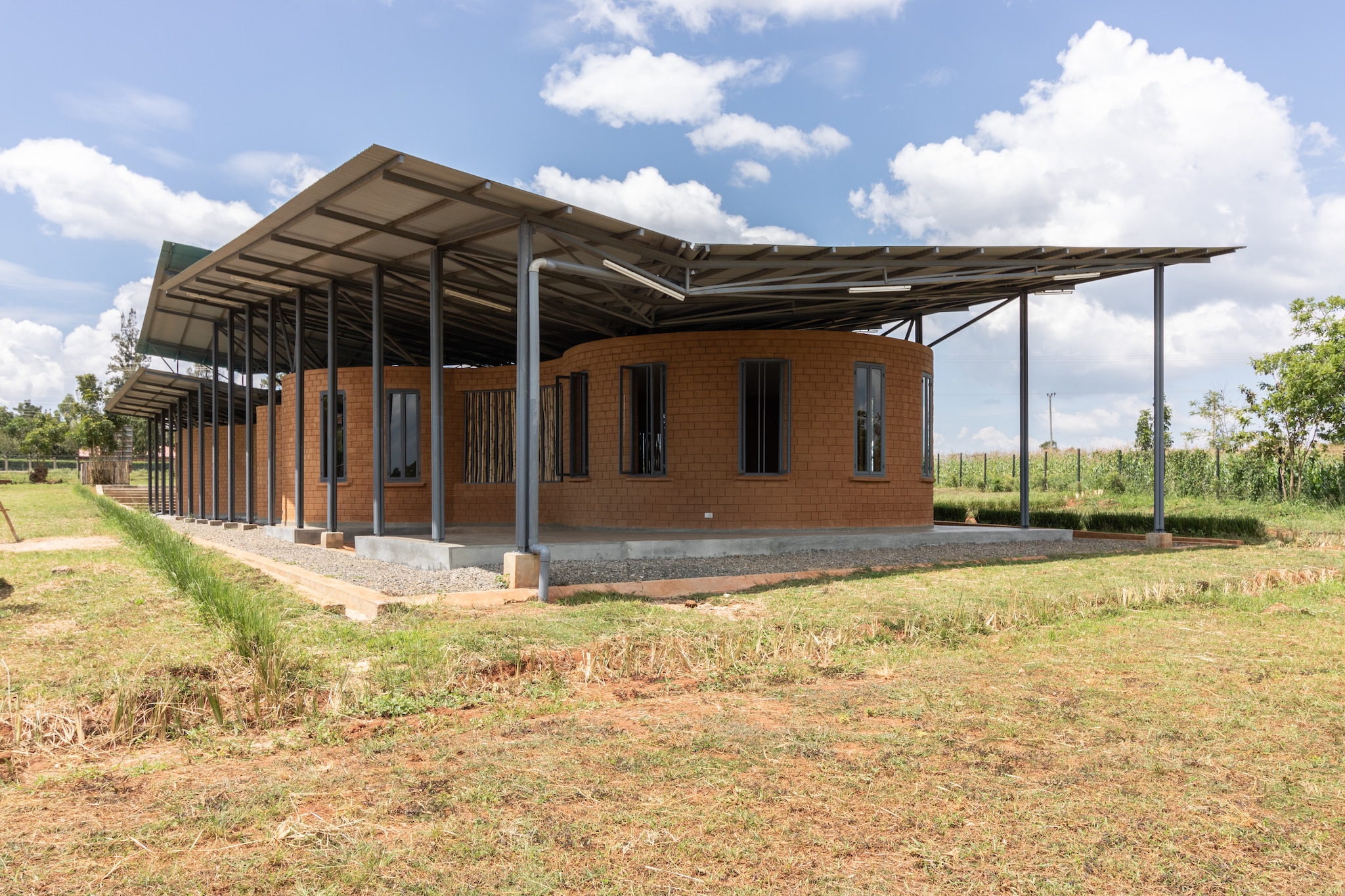
 View gallery
View gallery
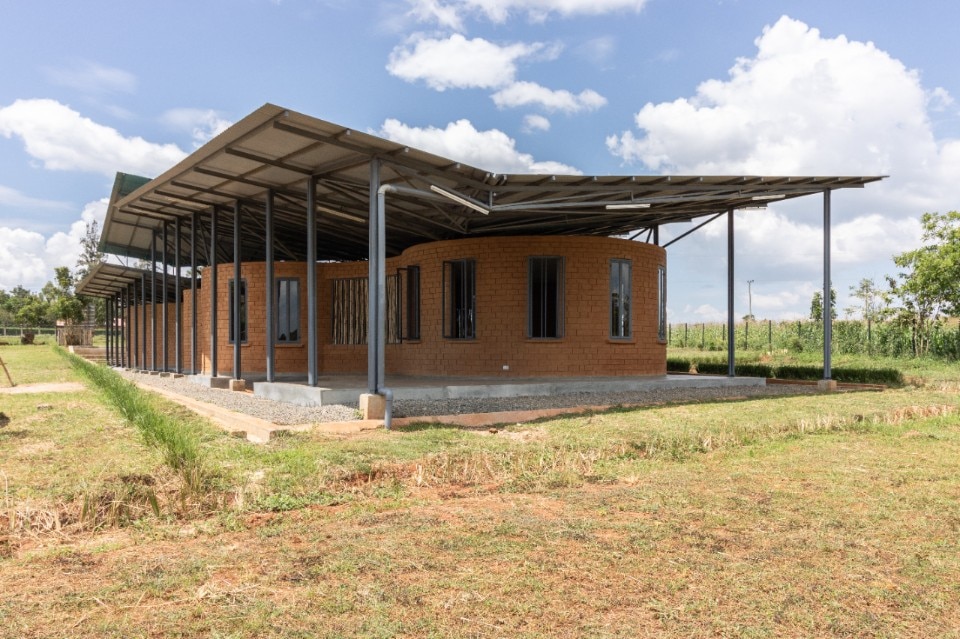
SKF-RTL CChildren Learning Centre, Nyang'oma Kogelo, Kenya, 2020
The centre is an educational facility for children aged 4 to 14 from Nyang’oma Kogelo and the surrounding district. It was commissioned by the Sauti Kuu Foundation with the aim of promoting personal development through skill-building activities such as sports and agriculture. The facility consists of two classrooms, a kitchen, office and bathrooms, with each function contained in a circular structure. These are arranged organically in relation to each other, drawing inspiration from the region’s traditional compounds. Curving walls tie together the circular units to define a number of interstitial spaces. Each space takes on specific characteristics, lending itself to different activities, as well as inviting children to gather and play. One space in particular, directly adjacent to the kitchen, features a lowered oval in the floor slab where children can sit in clusters during meal times. The walls are made of compressed earth bricks produced on-site, and they are interrupted by openings fitted with bamboo log panels that allow filtered light and a cool breeze to enter the space. The plan’s flowing forms contrast with the bold lines of the elevated butterfly roof. The steel canopy provides ample shade while allowing air to circulate throughout the structure, resulting in a pleasant inner climate. The roof also reaches beyond the building’s footprint, surrounding the outer walls with a generous shaded area.
Photo Jaime Herraiz
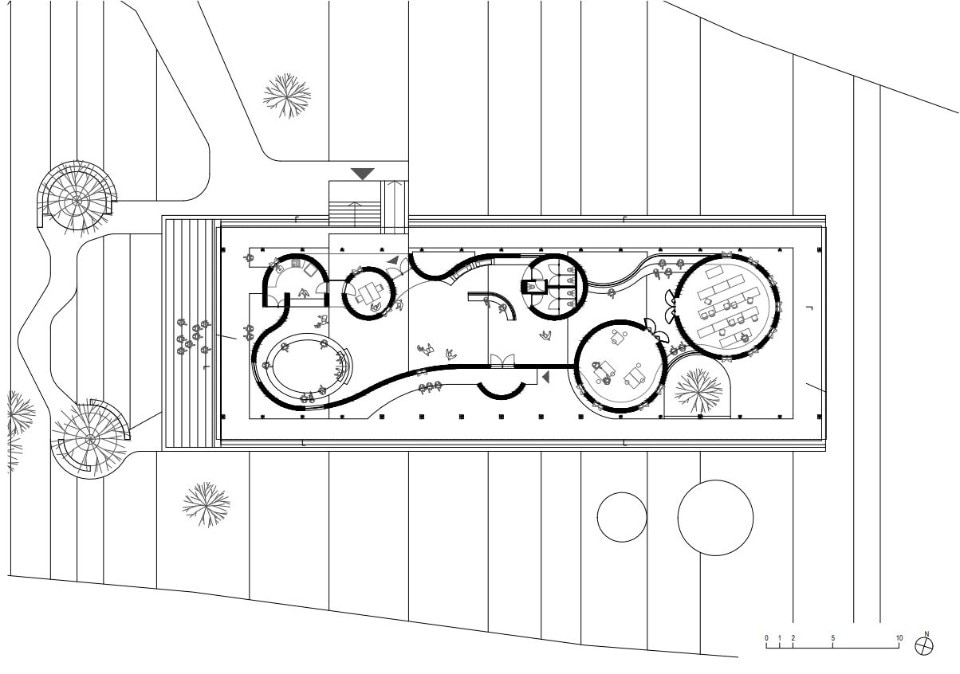
SKF-RTL CChildren Learning Centre, Nyang'oma Kogelo, Kenya, 2020
Courtesy Kéré Architecture

SKF-RTL CChildren Learning Centre, Nyang'oma Kogelo, Kenya, 2020
The centre is an educational facility for children aged 4 to 14 from Nyang’oma Kogelo and the surrounding district. It was commissioned by the Sauti Kuu Foundation with the aim of promoting personal development through skill-building activities such as sports and agriculture. The facility consists of two classrooms, a kitchen, office and bathrooms, with each function contained in a circular structure. These are arranged organically in relation to each other, drawing inspiration from the region’s traditional compounds. Curving walls tie together the circular units to define a number of interstitial spaces. Each space takes on specific characteristics, lending itself to different activities, as well as inviting children to gather and play. One space in particular, directly adjacent to the kitchen, features a lowered oval in the floor slab where children can sit in clusters during meal times. The walls are made of compressed earth bricks produced on-site, and they are interrupted by openings fitted with bamboo log panels that allow filtered light and a cool breeze to enter the space. The plan’s flowing forms contrast with the bold lines of the elevated butterfly roof. The steel canopy provides ample shade while allowing air to circulate throughout the structure, resulting in a pleasant inner climate. The roof also reaches beyond the building’s footprint, surrounding the outer walls with a generous shaded area.
Photo Jaime Herraiz

SKF-RTL CChildren Learning Centre, Nyang'oma Kogelo, Kenya, 2020
Courtesy Kéré Architecture
The idea for the architectural project emerged following the uprising that erupted in Burkina Faso in 2014. During the violent rioting, the building that housed the National Assembly at the time was set on fire, causing serious damage. Kéré’s design was intended to replace the old building and become the symbol of a new democratic renaissance. And above all, with its open structure, it was to mark a radical departure from the architectural heritage of the colonial period that is still clearly evident in Burkina Faso, particularly in its institutional and representative buildings. Subsequent political developments in Burkina Faso have meant that the project for the new National Assembly building in Ouagadougou has remained as yet unbuilt. However, along with his other concept for the Memorial Thomas Sankara (2017), it clearly indicates Kéré’s readiness as an architect to undertake a role of responsibility for his country’s reconstruction by creating symbols of a new identity, especially in the capital.
In the neighbouring nation of Benin, he has succeeded in producing an analogous project. In 2018 he won the competition to design the new parliament building in the capital Porto-Novo, now under construction. It will be the first such building on the continent to be designed and built by an African architect. In Porto-Novo, Kéré drew inspiration from the palaver tree, reproposing the ancient tradition of rural communities in sub-Saharan Africa, which today as in the past gather in the shade of a majestic tree to make consensual communal decisions. The new institutional building thereby acquires an important function: to give the country a new sense of self-awareness.
Kéré’s success in Africa and increasingly on other continents, too, is closely bound up with his dual cultural identity. Born and raised in Burkina Faso, he still has a strong bond with the social fabric and traditions of his native country. But he also has close ties to Europe thanks to his schooling and university studies in Germany. In 2005 he went on to establish his architectural practice in Berlin, and since 2017 he has held a chair at the Technische Universität in Munich.
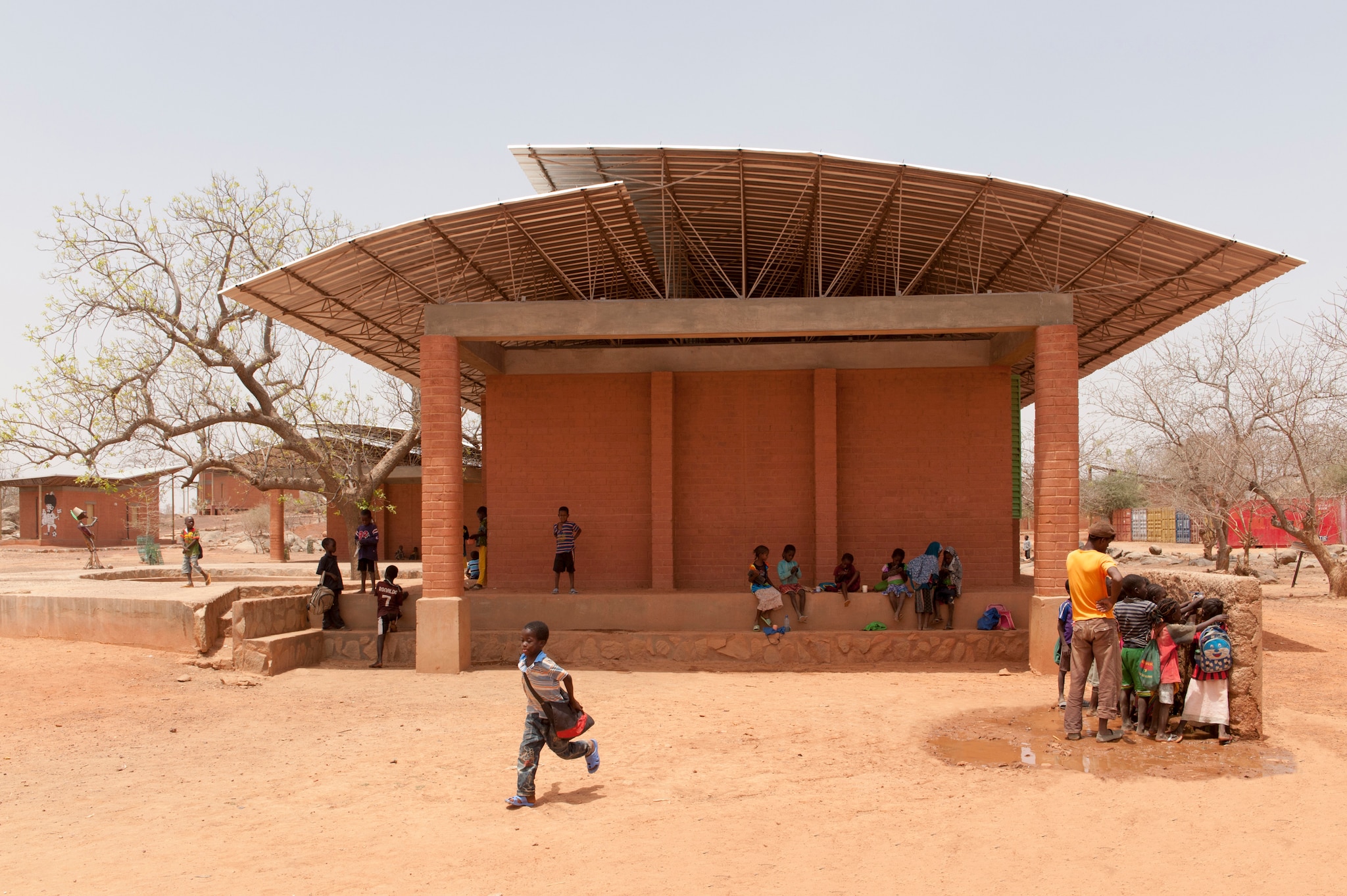
 View gallery
View gallery
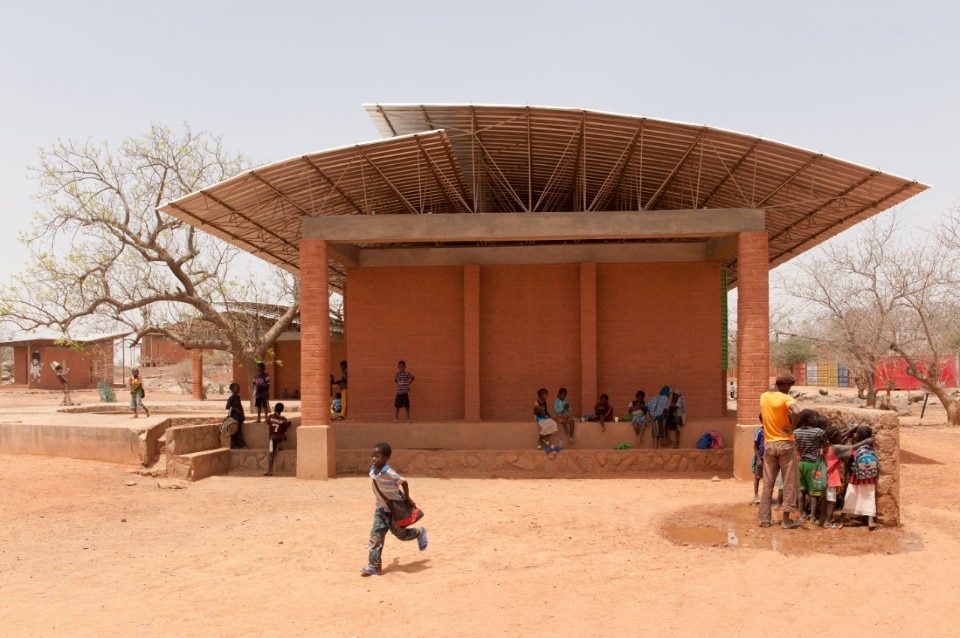
Opera Village, Laongo, Burkina Faso, 2010-ongoing
The Opera Village was initially conceived in 2009 and is the fruit of a collaboration between Francis Kéré and the late Christoph Schlingensief, theatre and film director and key figure in the German cultural scene. Schlingensief was first drawn to Kéré by his fascination with the element of participation that underlies many of Kéré Architecture’s projects, and which he likened to Joseph Beuys’s idea of social sculpture. The project lies at the crossroads of art and architecture and is being built as a tangible manifestation of a powerful utopian concept: an opera house at the heart of an African village. Rooted in Schlingensief’s belief that performance also takes place beyond the stage, the village becomes the backdrop against which the comedy and tragedy of daily life are played out. Central to the concept of the Opera Village is the idea of something perpetually unfinished and continuously developing, a respect for the importance of slowness and an appreciation of the course of maturation. In this the compromise between the fluidity of art and the formal nature of architecture is evident. Although there is a project plan, it is being built in stages, adapting to needs as it comes into being, with some elements perhaps never actually being built as a result. The design, as it was first imagined, consists of the main structure of the opera house surrounded by housing, workshops, ateliers, a school and a health centre. Since 2011, a number of the buildings have been completed in phases, for and in collaboration with the surrounding community, using clay, wood and laterite stone found on-site. The as yet unbuilt opera house at the centre of the village is envisioned as a spiral, its open-ended form symbolising the freedom of possibility.
Photo Erik-Jan Ouwerkerk

Opera Village, Laongo, Burkina Faso, 2010-ongoing
The Opera Village was initially conceived in 2009 and is the fruit of a collaboration between Francis Kéré and the late Christoph Schlingensief, theatre and film director and key figure in the German cultural scene. Schlingensief was first drawn to Kéré by his fascination with the element of participation that underlies many of Kéré Architecture’s projects, and which he likened to Joseph Beuys’s idea of social sculpture. The project lies at the crossroads of art and architecture and is being built as a tangible manifestation of a powerful utopian concept: an opera house at the heart of an African village. Rooted in Schlingensief’s belief that performance also takes place beyond the stage, the village becomes the backdrop against which the comedy and tragedy of daily life are played out. Central to the concept of the Opera Village is the idea of something perpetually unfinished and continuously developing, a respect for the importance of slowness and an appreciation of the course of maturation. In this the compromise between the fluidity of art and the formal nature of architecture is evident. Although there is a project plan, it is being built in stages, adapting to needs as it comes into being, with some elements perhaps never actually being built as a result. The design, as it was first imagined, consists of the main structure of the opera house surrounded by housing, workshops, ateliers, a school and a health centre. Since 2011, a number of the buildings have been completed in phases, for and in collaboration with the surrounding community, using clay, wood and laterite stone found on-site. The as yet unbuilt opera house at the centre of the village is envisioned as a spiral, its open-ended form symbolising the freedom of possibility.
Photo Erik-Jan Ouwerkerk
This twofold identity gives Kéré the capacity to mediate between these two worlds through his projects. Right from the construction of the primary school in Gando, Kéré set about transferring the widespread awareness in Europe of the need for sustainable architecture by applying it to the local conditions of life in the savannah, to which he is still deeply tied. For example, despite the initial scepticism of his native African community, as a building material he chose local clay, the cheapest and most environmentally friendly material available on site. Thanks to the success of the project, Kéré proceeded shortly afterwards to expand the structure with the addition of further classrooms, followed by accommodation for teachers.
Today the village of Gando has come to host an educational campus of interregional significance. From here another key principle of his work emerges: incremental design, allowing for the architectural extension of a functional component. Examples of this type of organic architectural expansion include the Opera Village initiated by Christoph Schlingensief in Laongo (with construction beginning in 2010) with two school buildings and spaces used as workshops as well as 16 other completed buildings, followed by the adjoining Centre for Health and Social Welfare (2014), and the Surgical Clinic and Health Centre in Léo (2014). The educational campus in Koudougou, where work began in 2014 with the construction of the Lycée Schorge Secondary School, was expanded in 2020 by incorporating the Burkina Institute of Technology. All these projects have a common denominator: they are educational, cultural or health complexes directly serving communities in a country where such provision is direly inadequate.
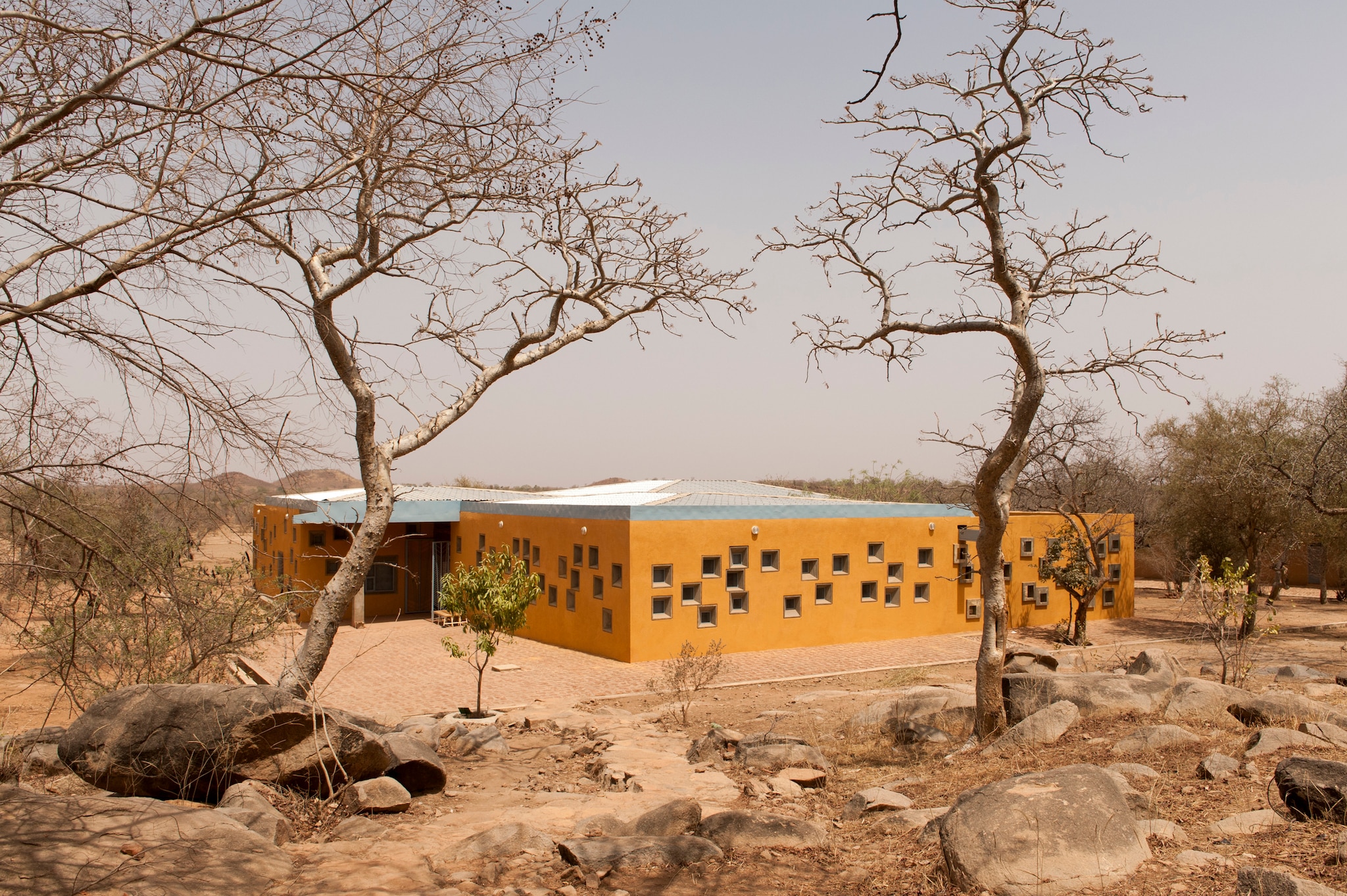
 View gallery
View gallery
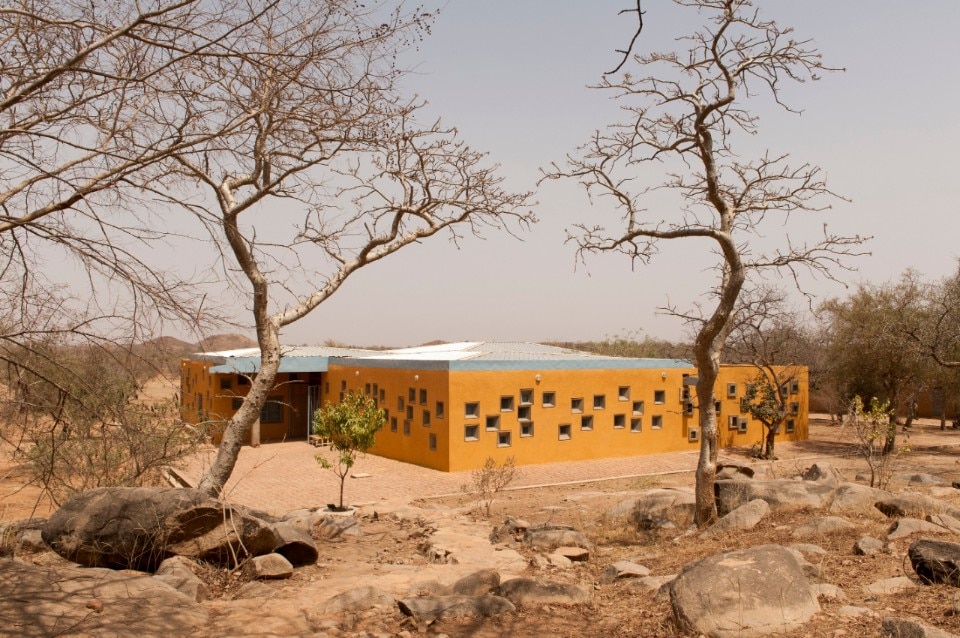
Centre for Health and Social Welfare, Laongo, Burkina Faso, 2014
As an important component of the Opera Village project, the centre is geared towards providing basic health and medical resources for the local population in Laongo and the surrounding areas. The centre consists of three units organised around a central waiting area: dentistry, gynaecology and obstetrics, and general medicine. The facility is rendered with examination rooms, inpatient wards and staff offices. Special consideration is taken for the visitors and families of patients with several shaded courtyards for gathering and waiting. The playful fenestration design emerged from the varying sight lines of standing, seated or bedridden individuals including children. The windows are composed like picture frames, with each individual view focused on a unique part of the landscape. In keeping with the material aesthetic and ecology of the Opera Village, local clay and laterite stone were used in the double-envelope construction of the walls to provide extra rain protection. Locally available eucalyptus wood, seen as an environmental nuisance as it contributes to desertification, is used to line the centre’s suspended ceilings and covered walkways.
Photo Erik-Jan Ouwerker, Kéré Architecture
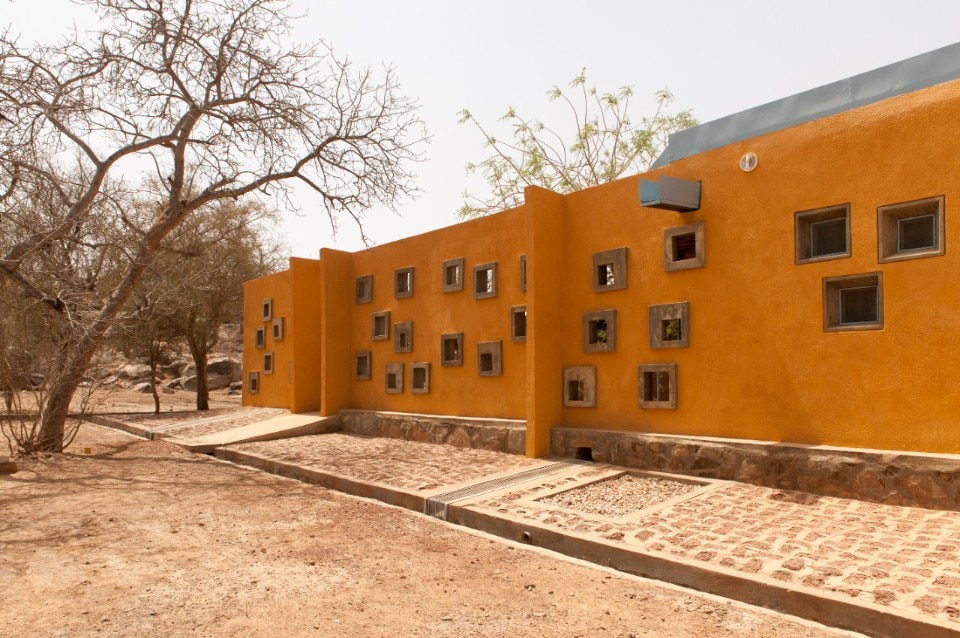
Centre for Health and Social Welfare, Laongo, Burkina Faso, 2014
Photo Erik-Jan Ouwerker, Kéré Architecture
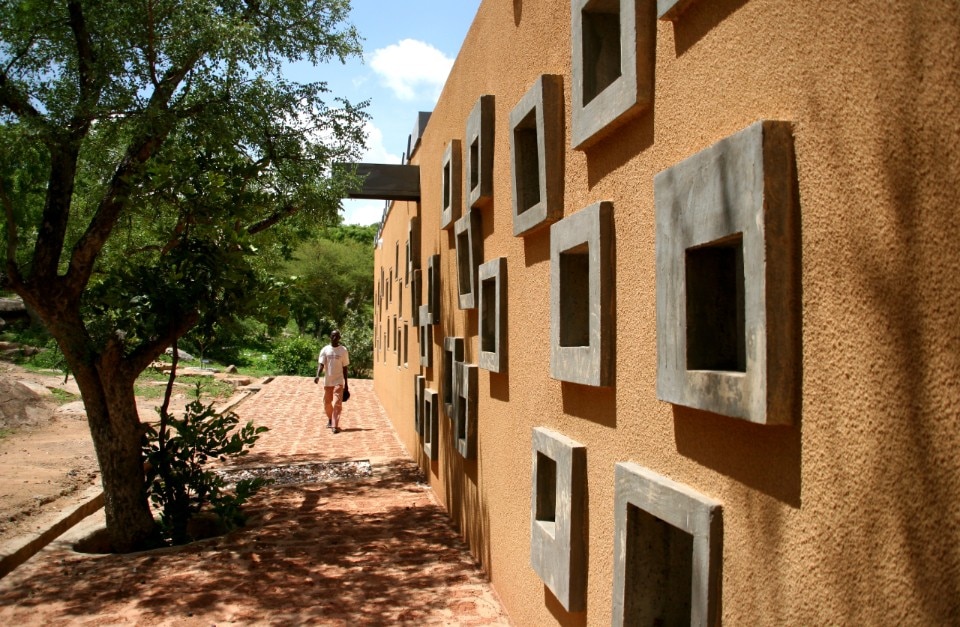
Centre for Health and Social Welfare, Laongo, Burkina Faso, 2014
Photo Erik-Jan Ouwerker, Kéré Architecture
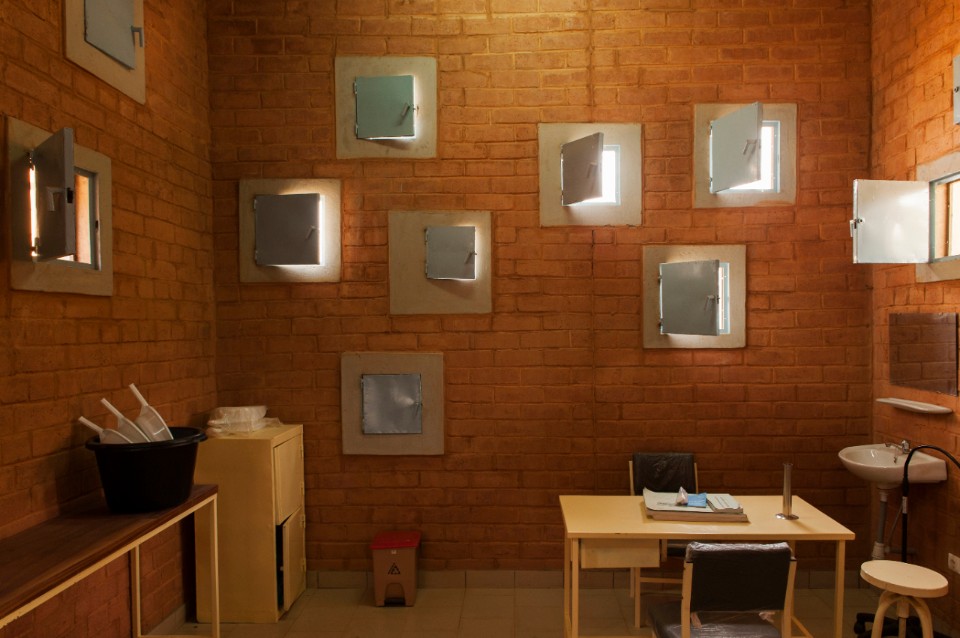
Centre for Health and Social Welfare, Laongo, Burkina Faso, 2014
Photo Erik-Jan Ouwerker, Kéré Architecture
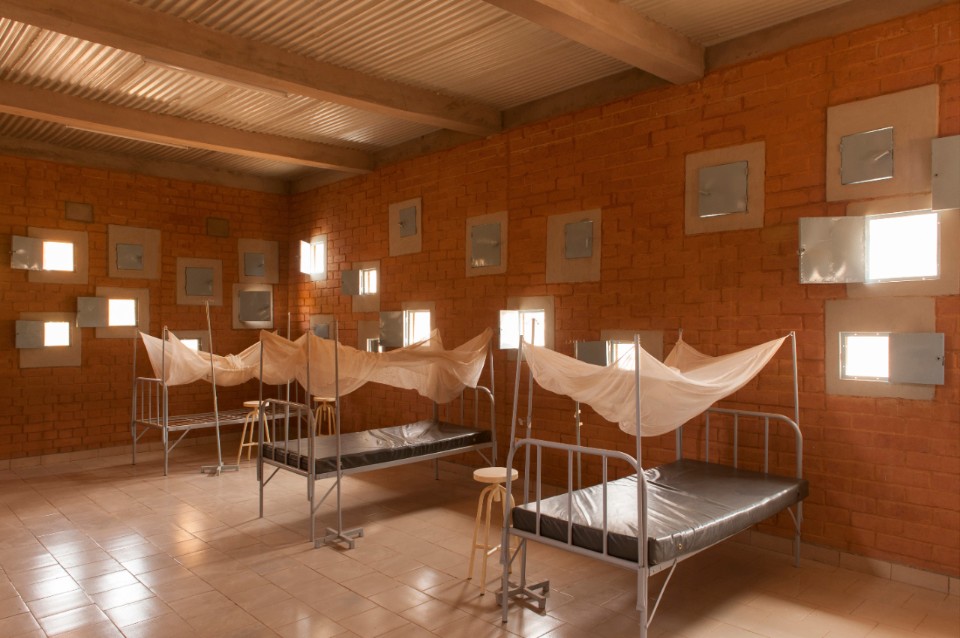
Centre for Health and Social Welfare, Laongo, Burkina Faso, 2014
Photo Erik-Jan Ouwerker, Kéré Architecture
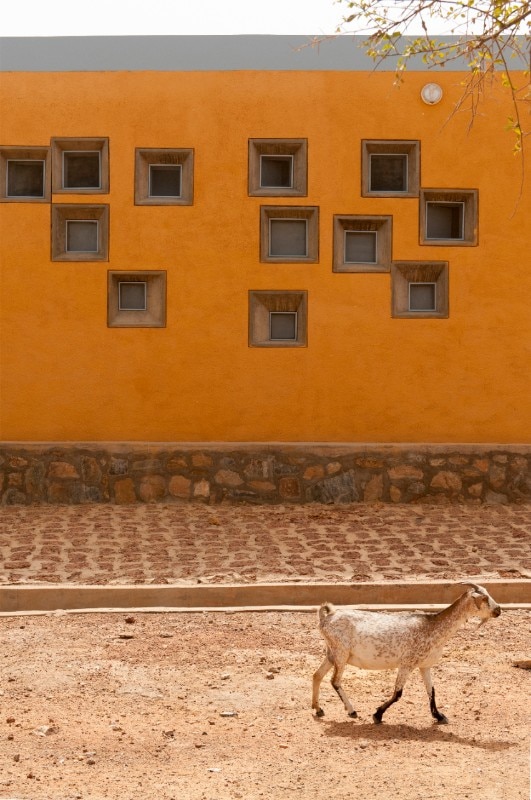
Centre for Health and Social Welfare, Laongo, Burkina Faso, 2014
Photo Erik-Jan Ouwerker, Kéré Architecture
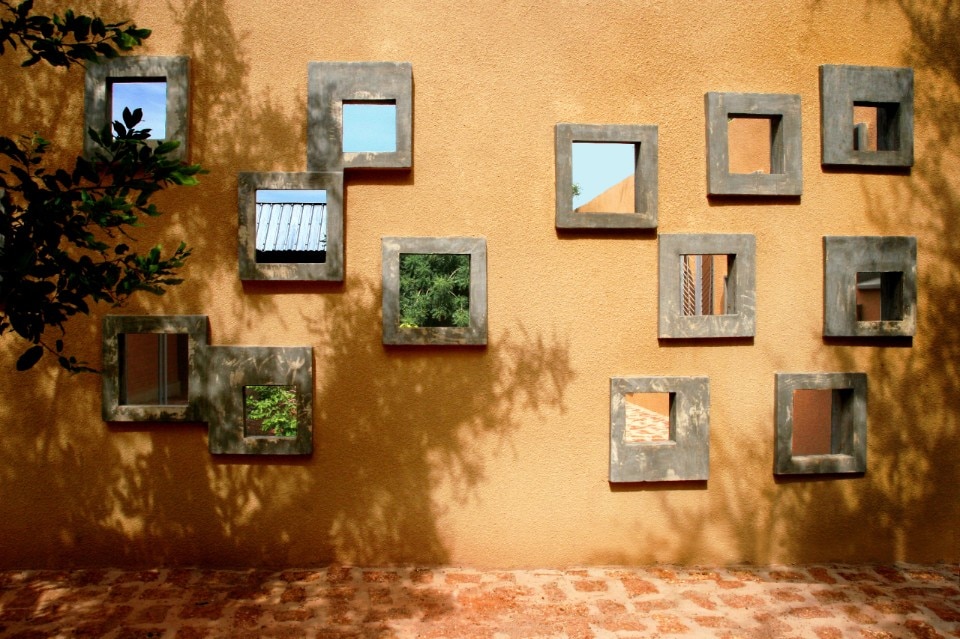
Centre for Health and Social Welfare, Laongo, Burkina Faso, 2014
Photo Erik-Jan Ouwerker, Kéré Architecture
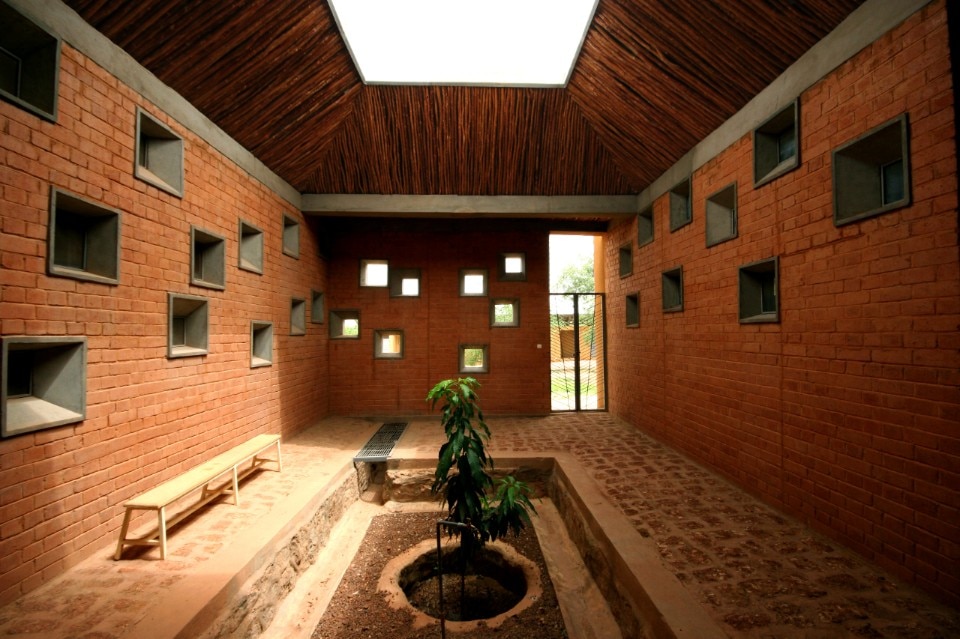
Centre for Health and Social Welfare, Laongo, Burkina Faso, 2014
Photo Erik-Jan Ouwerker, Kéré Architecture
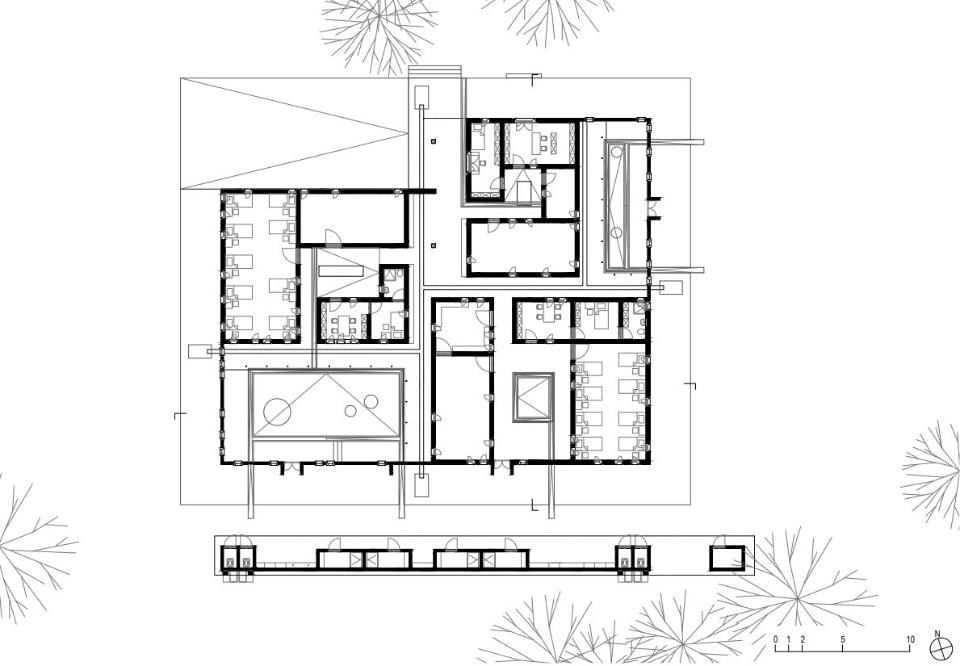
Centre for Health and Social Welfare, Laongo, Burkina Faso, 2014
Courtesy Kéré Architecture

Centre for Health and Social Welfare, Laongo, Burkina Faso, 2014
As an important component of the Opera Village project, the centre is geared towards providing basic health and medical resources for the local population in Laongo and the surrounding areas. The centre consists of three units organised around a central waiting area: dentistry, gynaecology and obstetrics, and general medicine. The facility is rendered with examination rooms, inpatient wards and staff offices. Special consideration is taken for the visitors and families of patients with several shaded courtyards for gathering and waiting. The playful fenestration design emerged from the varying sight lines of standing, seated or bedridden individuals including children. The windows are composed like picture frames, with each individual view focused on a unique part of the landscape. In keeping with the material aesthetic and ecology of the Opera Village, local clay and laterite stone were used in the double-envelope construction of the walls to provide extra rain protection. Locally available eucalyptus wood, seen as an environmental nuisance as it contributes to desertification, is used to line the centre’s suspended ceilings and covered walkways.
Photo Erik-Jan Ouwerker, Kéré Architecture

Centre for Health and Social Welfare, Laongo, Burkina Faso, 2014
Photo Erik-Jan Ouwerker, Kéré Architecture

Centre for Health and Social Welfare, Laongo, Burkina Faso, 2014
Photo Erik-Jan Ouwerker, Kéré Architecture

Centre for Health and Social Welfare, Laongo, Burkina Faso, 2014
Photo Erik-Jan Ouwerker, Kéré Architecture

Centre for Health and Social Welfare, Laongo, Burkina Faso, 2014
Photo Erik-Jan Ouwerker, Kéré Architecture

Centre for Health and Social Welfare, Laongo, Burkina Faso, 2014
Photo Erik-Jan Ouwerker, Kéré Architecture

Centre for Health and Social Welfare, Laongo, Burkina Faso, 2014
Photo Erik-Jan Ouwerker, Kéré Architecture

Centre for Health and Social Welfare, Laongo, Burkina Faso, 2014
Photo Erik-Jan Ouwerker, Kéré Architecture

Centre for Health and Social Welfare, Laongo, Burkina Faso, 2014
Courtesy Kéré Architecture
In designing these facilities, some of them very complex, Kéré Architecture has developed a special strategic expertise. This involves a cheaper and more sustainable architectural model that makes a purposeful and intelligent use of local building materials such as clay and laterite brick as well as local building workers, while also remaining highly ambitious in terms of structures and design. By organising his projects in this way, Kéré seeks to ensure that the funds raised for their construction are returned to the local economy, while also inserting the activities and management of schools and hospitals into the state system. With the construction of similar facilities such as the more recent Startup Lions Campus in Turkana (2021), the SKF-RTL Children Learning Centre in the village of Nyang’oma Kogelo (2020), both in Kenya, and the Kamwokya Community Playground in Kampala, Uganda, to be completed in 2022, Kéré Architecture shows that projects built in Burkina Faso and other sub-Saharan regions can be successfully adopted in other parts of Africa.
The prominence gained by his projects in sub-Saharan Africa has made Kéré an example for a new generation of architects in Africa that includes Mariam Kamara in Niger, among others. With the ongoing construction of the Goethe-Institut in Dakar, Senegal, Kéré Architecture has taken a further step forward. The worldwide branches of this German cultural association are mainly financed by the Federal Foreign Office and serve as a platform for the study of the German language and the promotion of international cultural exchange, rather than the dissemination of German culture per se. The institute’s Dakar building is the first Goethe-Institut to be purpose-built, and in this case also designed by an African architect.
Many African states have long been searching for ways to overcome the trauma and consequences of colonialism and counter the trends of a new economic colonisation. In this sense, Kéré’s contribution to Dakar is very important. A cultural dialogue is given expression right from its architectural manifestation, demonstrating that it is possible to conceive a new postcolonial architecture through dialogue. Apart from designing and erecting buildings, in recent years Kéré has become increasingly well known around the world for the design of pavilions, exhibitions and museum installations.
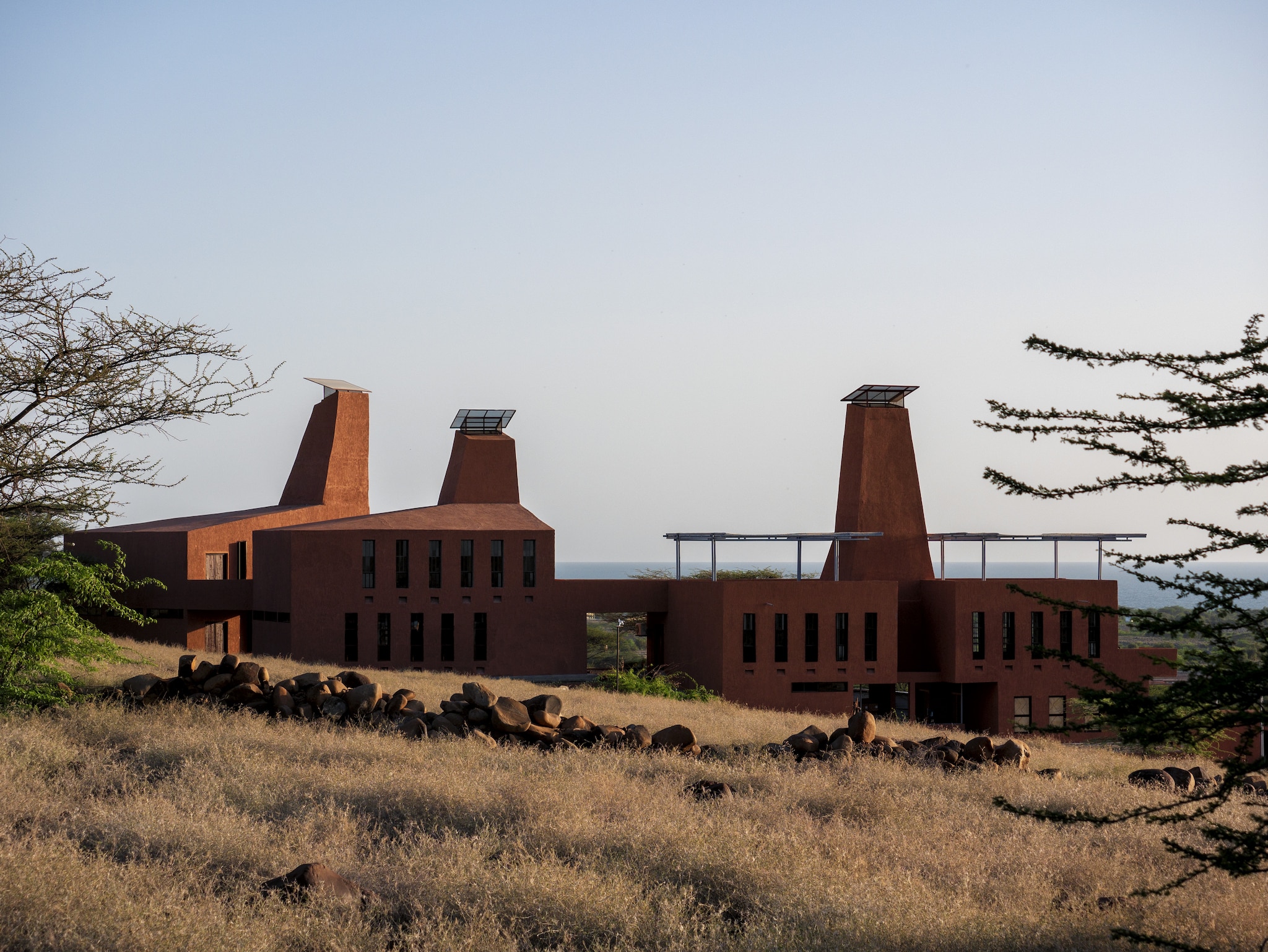
 View gallery
View gallery
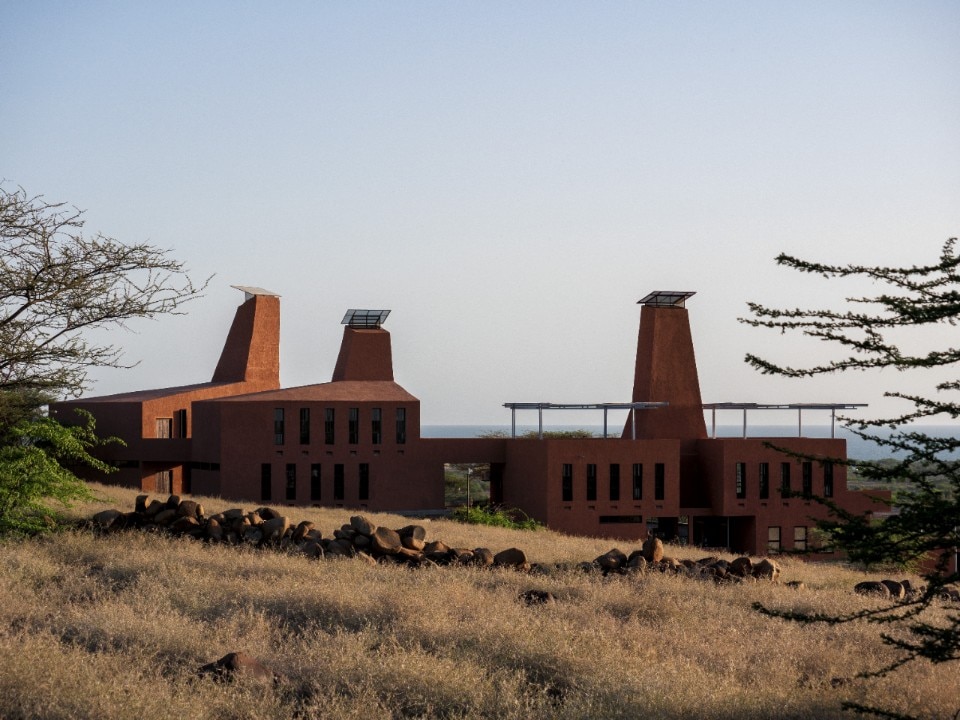
Startup Lions Campus, Turkana County, Kenya, 2021
The Startup Lions Campus is an information and communication technologies (ICT) campus, located on the banks of Lake Turkana, Kenya. The project responds to the pressing challenge of youth unemployment faced in the region by offering high-level training and access to international job opportunities, allowing young entrepreneurs to thrive professionally without having to leave their place of origin. The campus will provide 100 new workstations and is the first step in an ambitious vision of spreading ICT networks in remote areas. The project celebrates the unique morphology and natural beauty of its site. It is built over two levels that follow the natural slope and features extensive roof terraces that offer sweeping views over the lake. The roof terraces are shaded by creeping vegetation, providing pleasant outdoor meeting spaces and opportunities for the informal exchange of ideas. The building takes inspiration from the towering mounds built by termite colonies in the region. Tall ventilation towers create a stack effect to naturally cool the main working spaces by extracting warm air upwards, while fresh air is introduced through specially designed low-level openings. This system allows the campus to withstand high temperatures and is especially well suited as it prevents dust from damaging the IT equipment. In addition to their functional role, the towers create a landmark in the surroundings. The campus is built out of locally sourced quarry stone with a plaster finish. In the process of choosing which materials and construction techniques to use, ecological sustainability, cost and availability factors were weighed to arrive at the best compromise. Collaboration with the local community was a key factor in this decision-making process, drawing on their experience and expertise.
Photo Kinan Deeb

Startup Lions Campus, Turkana County, Kenya, 2021
The Startup Lions Campus is an information and communication technologies (ICT) campus, located on the banks of Lake Turkana, Kenya. The project responds to the pressing challenge of youth unemployment faced in the region by offering high-level training and access to international job opportunities, allowing young entrepreneurs to thrive professionally without having to leave their place of origin. The campus will provide 100 new workstations and is the first step in an ambitious vision of spreading ICT networks in remote areas. The project celebrates the unique morphology and natural beauty of its site. It is built over two levels that follow the natural slope and features extensive roof terraces that offer sweeping views over the lake. The roof terraces are shaded by creeping vegetation, providing pleasant outdoor meeting spaces and opportunities for the informal exchange of ideas. The building takes inspiration from the towering mounds built by termite colonies in the region. Tall ventilation towers create a stack effect to naturally cool the main working spaces by extracting warm air upwards, while fresh air is introduced through specially designed low-level openings. This system allows the campus to withstand high temperatures and is especially well suited as it prevents dust from damaging the IT equipment. In addition to their functional role, the towers create a landmark in the surroundings. The campus is built out of locally sourced quarry stone with a plaster finish. In the process of choosing which materials and construction techniques to use, ecological sustainability, cost and availability factors were weighed to arrive at the best compromise. Collaboration with the local community was a key factor in this decision-making process, drawing on their experience and expertise.
Photo Kinan Deeb
At the presentation of the “Restoring Family Links” section of the permanent exhibition titled “The Humanitarian Adventure” at the International Red Cross and Red Crescent Museum in Geneva, in 2012 Kéré Architecture showed that it was already exploring ways of representing complex social issues in spatial structures. In 2014, the interactive Sensing Spaces installation at the Royal Academy of Arts in London was notable for its strongly dynamic and chromatic qualities, capable of creating a powerful sculptural effect. It was developed further in 2016 for his Colorscape installation at the Philadelphia Museum of Art. The exhibition “Francis Kéré. Radically Simple” (2016- 2017), at the Architekturmuseum in the Pinakothek der Moderne of the Technical University of Munich, offered the first overview of Kéré’s early creative period.
It was also the first attempt to present a retrospective of his work in which the architecture of the exhibition spaces was designed by the architect himself. And the Serpentine Pavilion in 2017 was an example of how Kéré has translated the metaphor of the palaver tree as an African community gathering place into a European context.
The award of the Pritzker Prize to Francis Kéré in 2022 is a historic event. The fact that this honour has been bestowed for the first time on an architect born in Africa and active there for over two decades, producing social and sustainable work, is proof of the exceptional architectural evolution underway on the African continent in search of a postcolonial identity. At the same time, the award is recognition of Kéré’s distinctive approach, based on his dual cultural identity, in developing new design strategies, effective not only in sub-Saharan countries but also in other regions.


